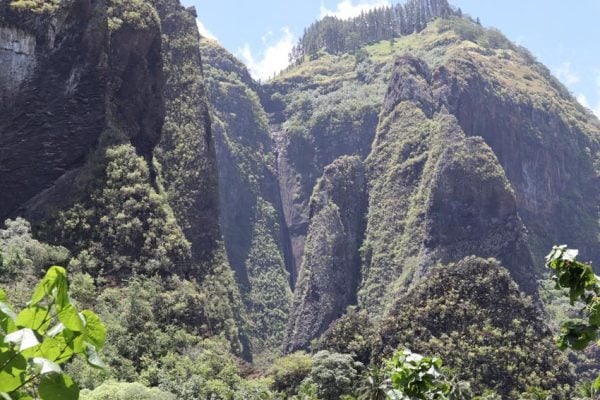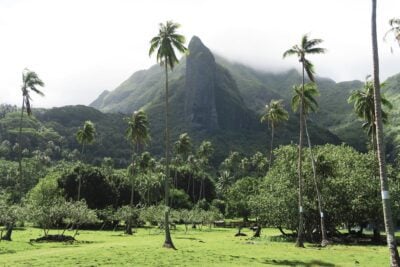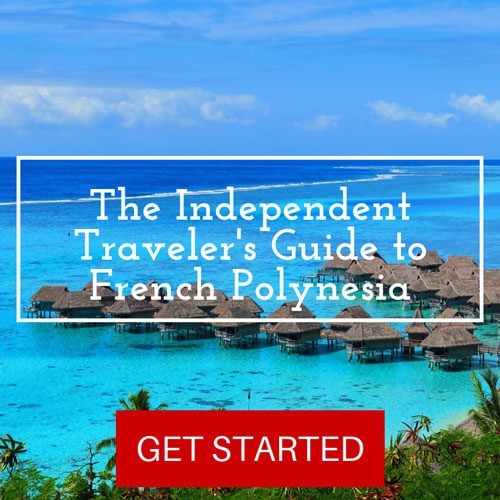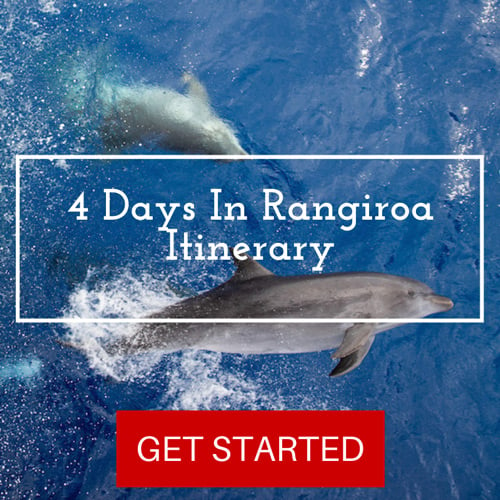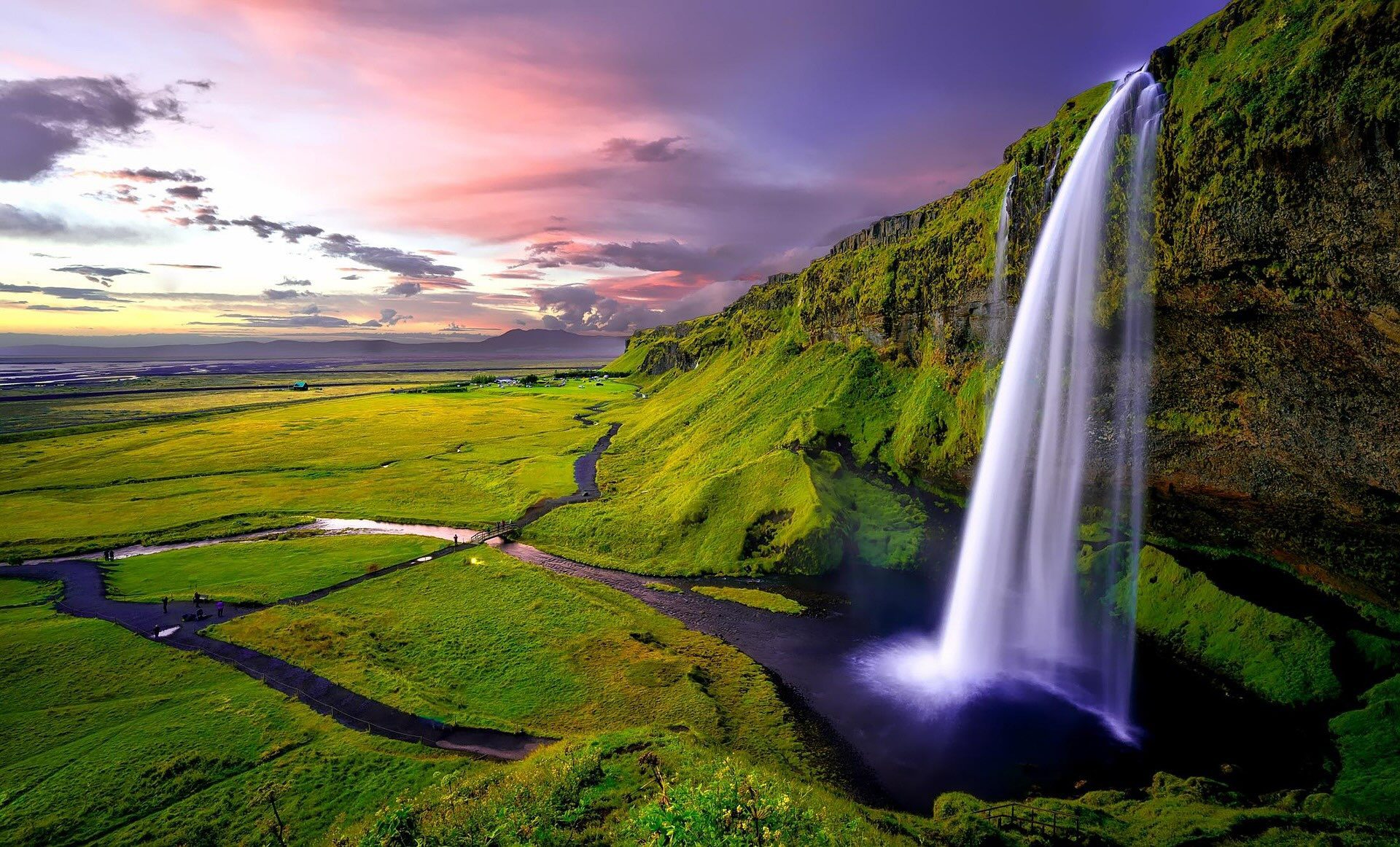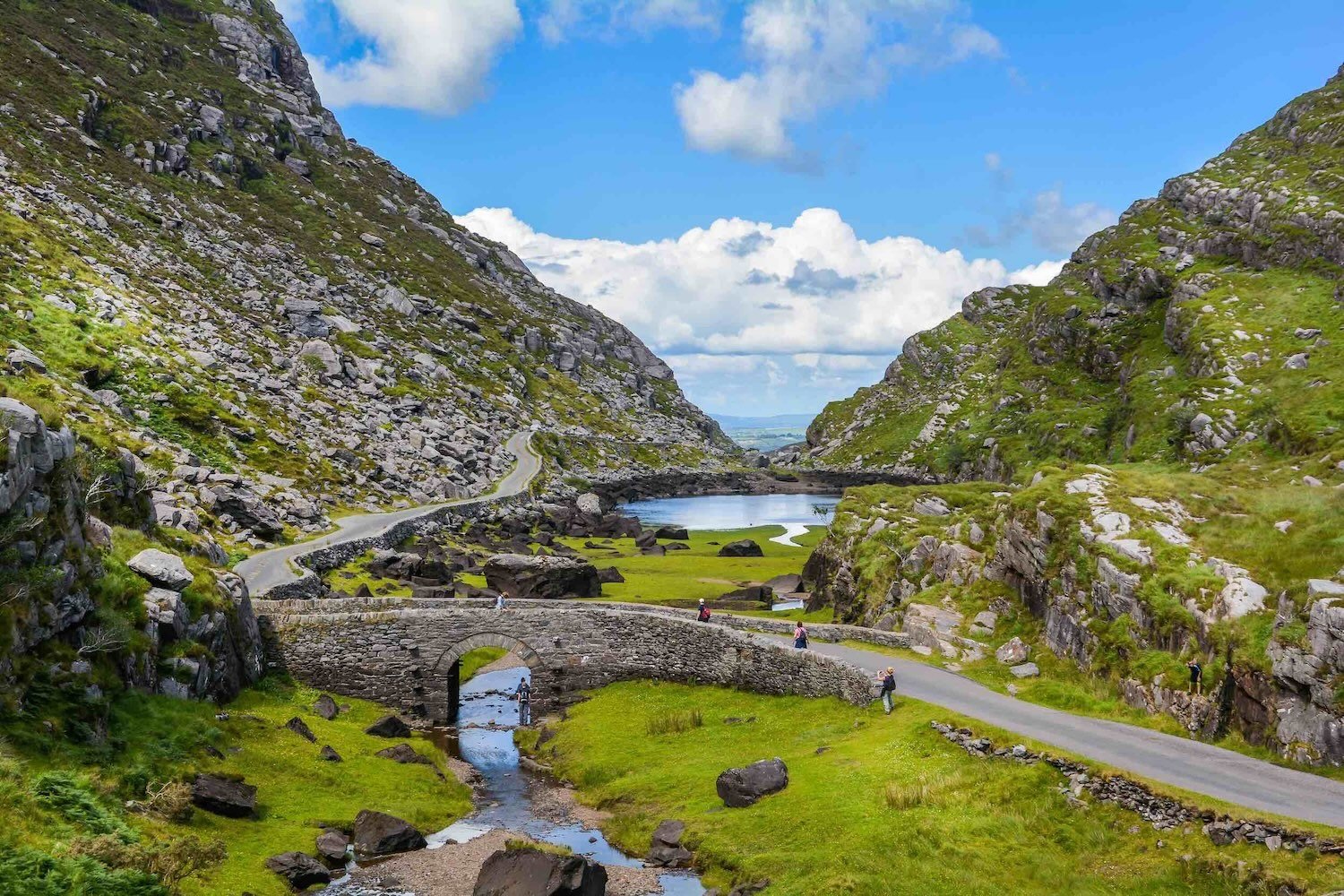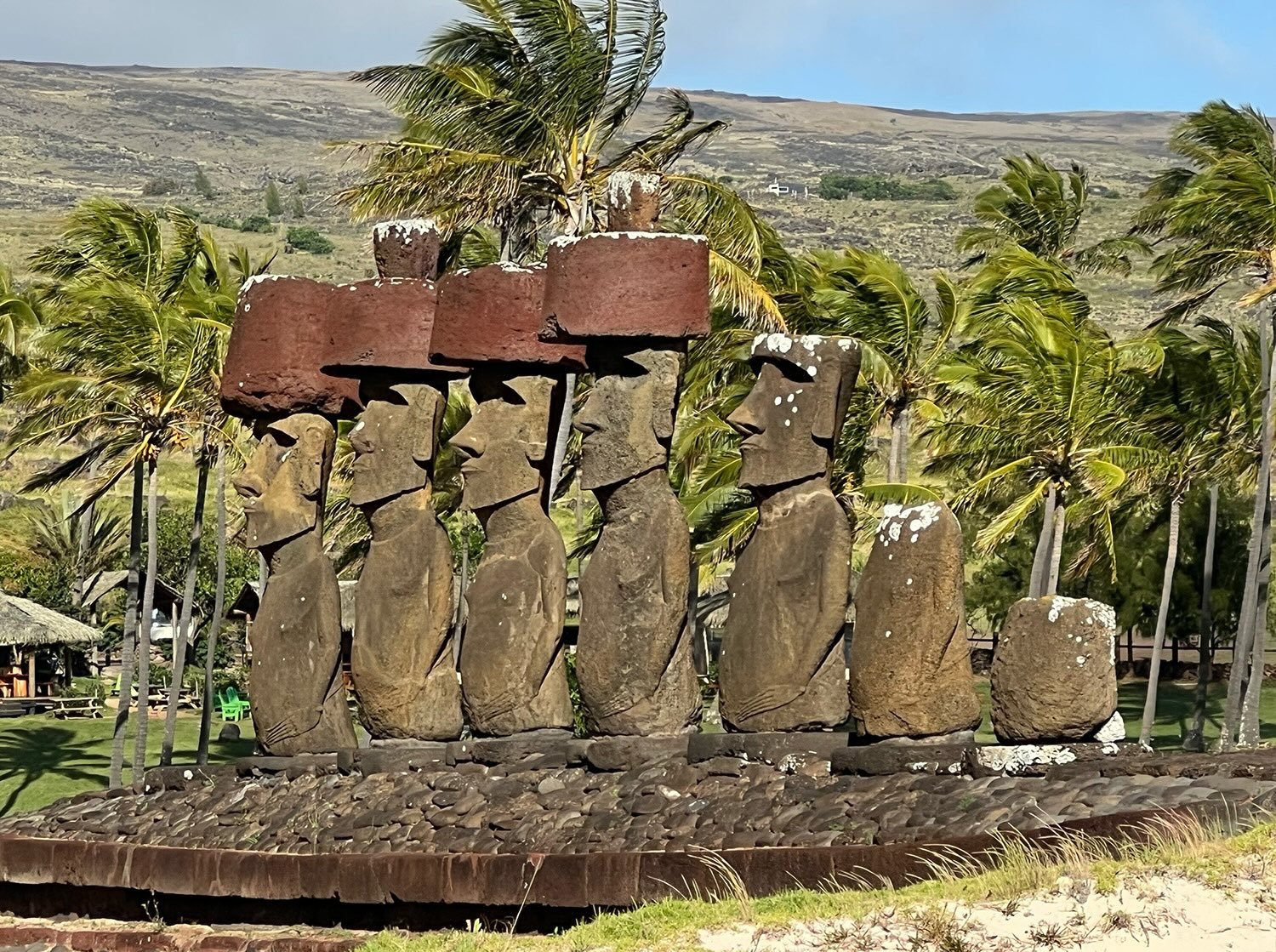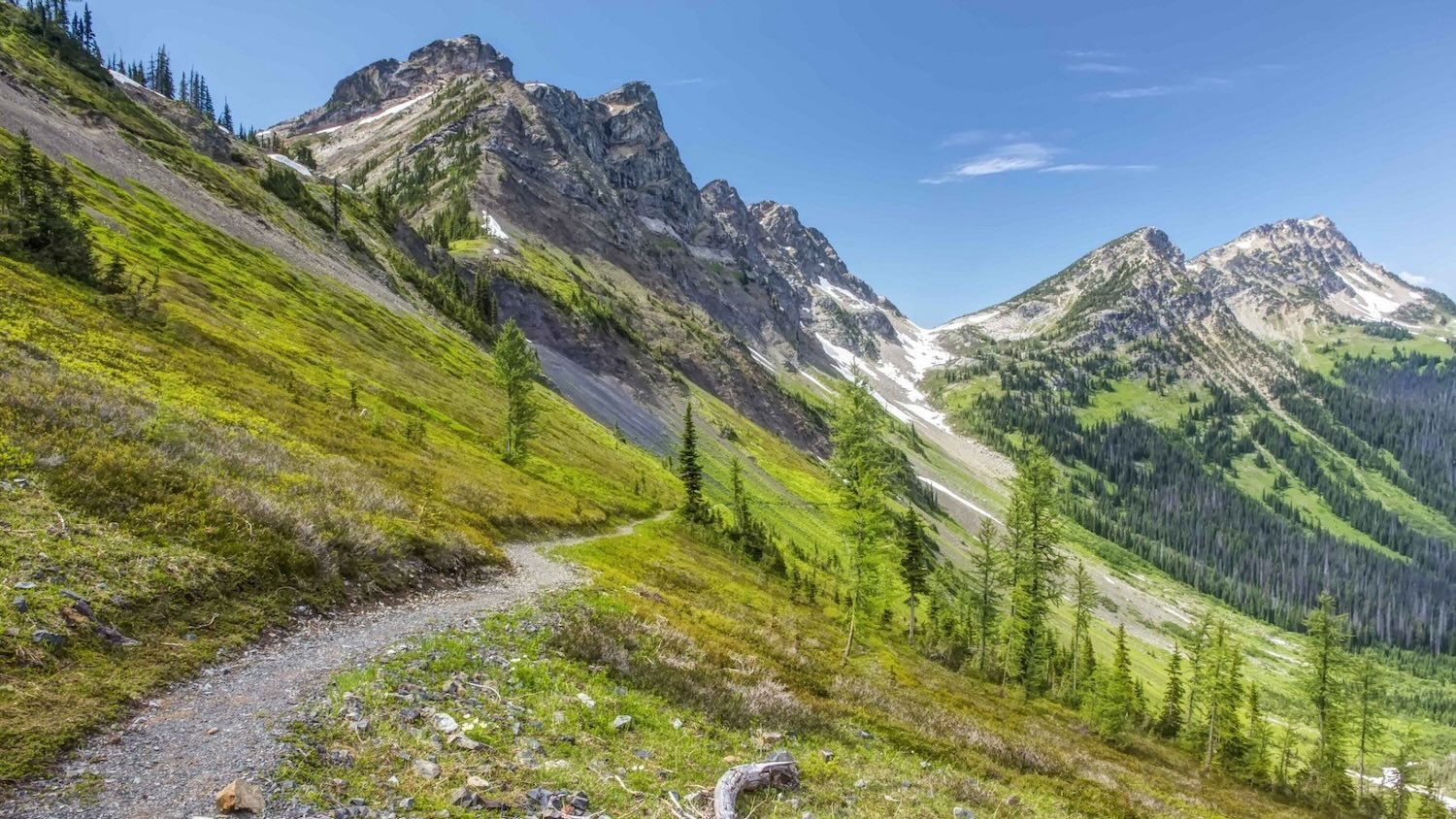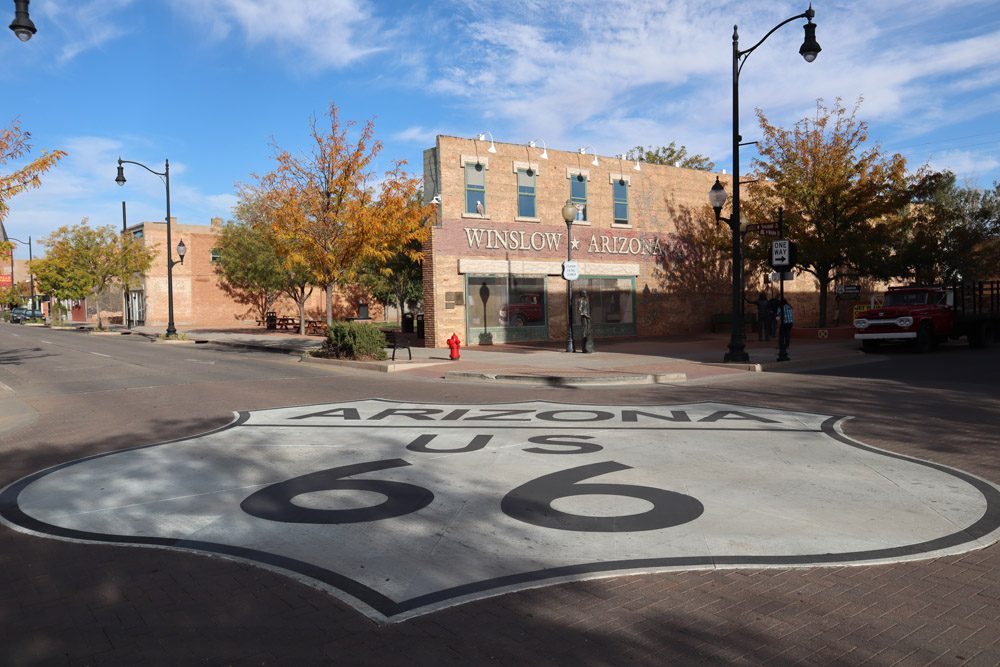Rangiroa Travel Guide
Things To Do & Places To See In Rangiroa
This section of the Rangiroa travel guide deep dives into Rangiroa’s top highlights, both on land and underwater.
Scuba Diving In The Tiputa Pass
The Tiputa Pass is where you’ll do most of your diving, and it’s also the major pass in and out of the lagoon. It’s narrow and relatively deep, a legendary dive site that draws divers from all corners of the globe. The best time to dive in the Tiputa Pass is when the current is slightly outgoing or incoming. At these times, there’s a greater likelihood of seeing dolphins and sharks.
The Angle
The Angle is a popular dive site just outside the pass along the Ohotu Cliff. You’ll almost always dive here once during a two-tank outing. It’s a 90-degree break in the reef with a huge concentration of fish and perhaps a few surprises. We saw massive schools of snapper fish moving in perfect harmony, some dolphins, and sea turtles. Further below us in the deep, we could spot sharks patrolling the water.
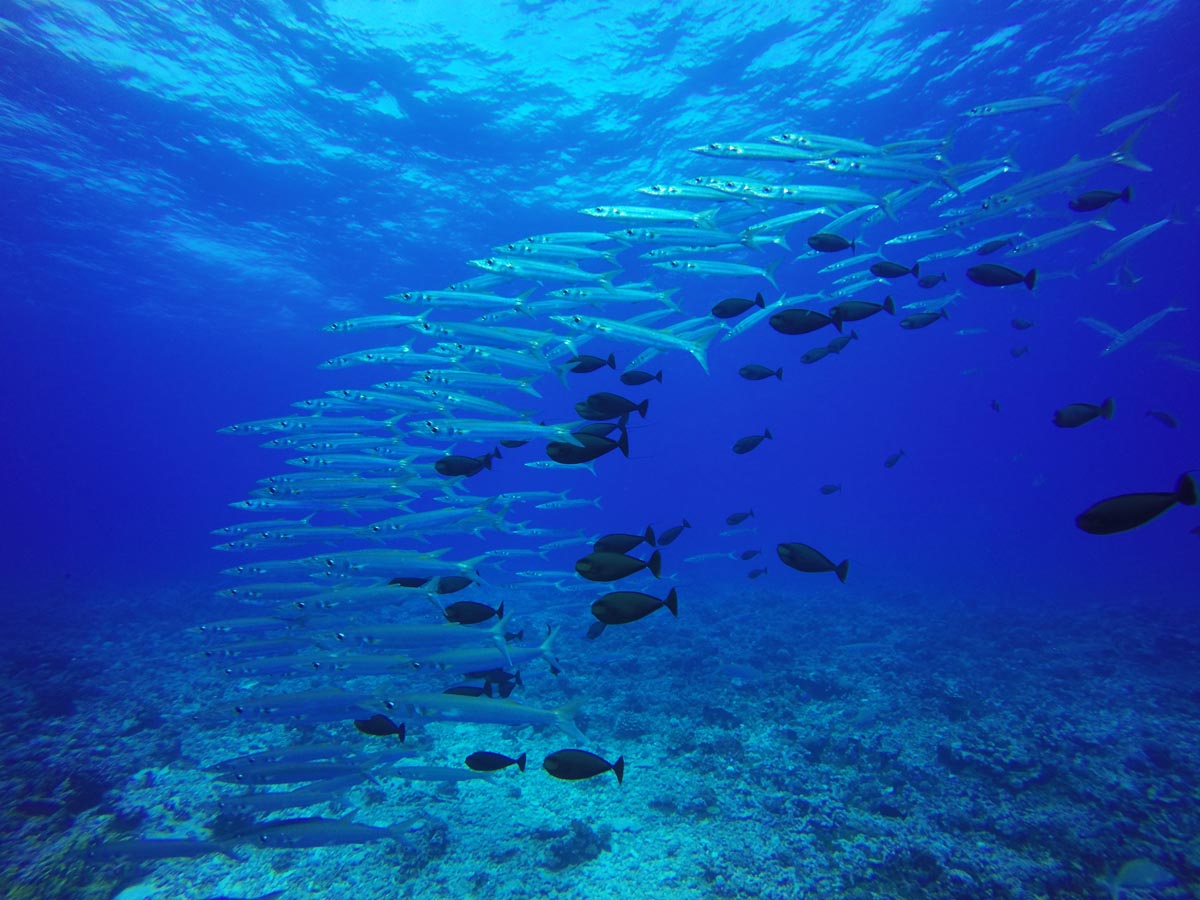
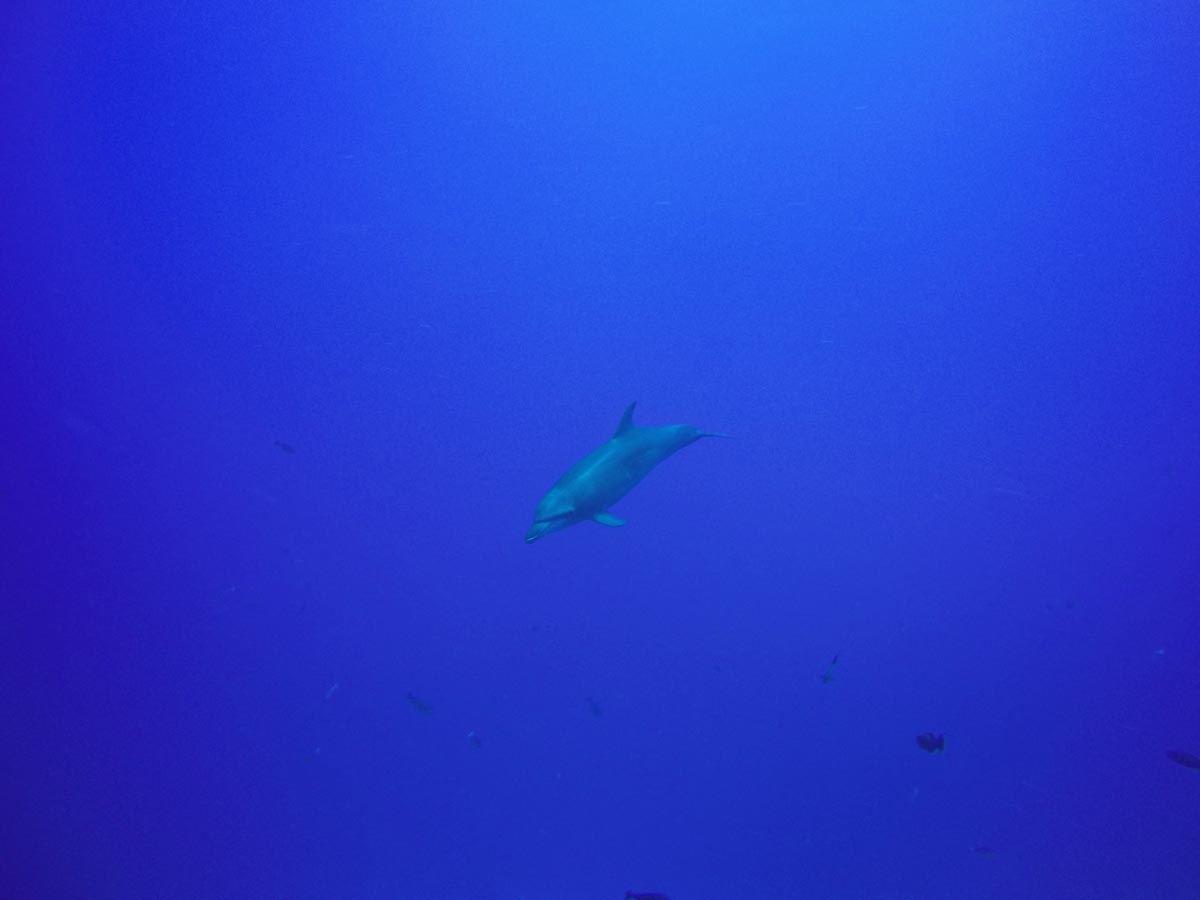
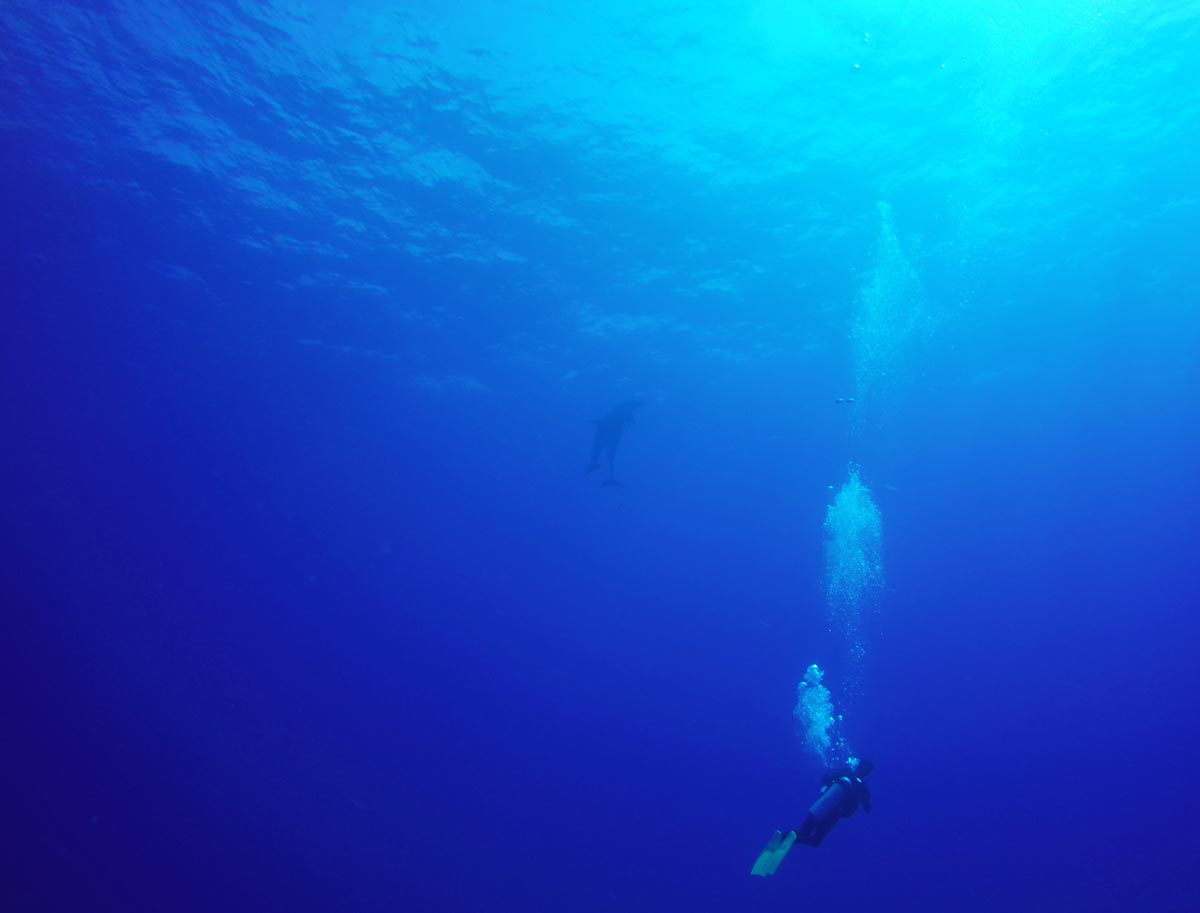
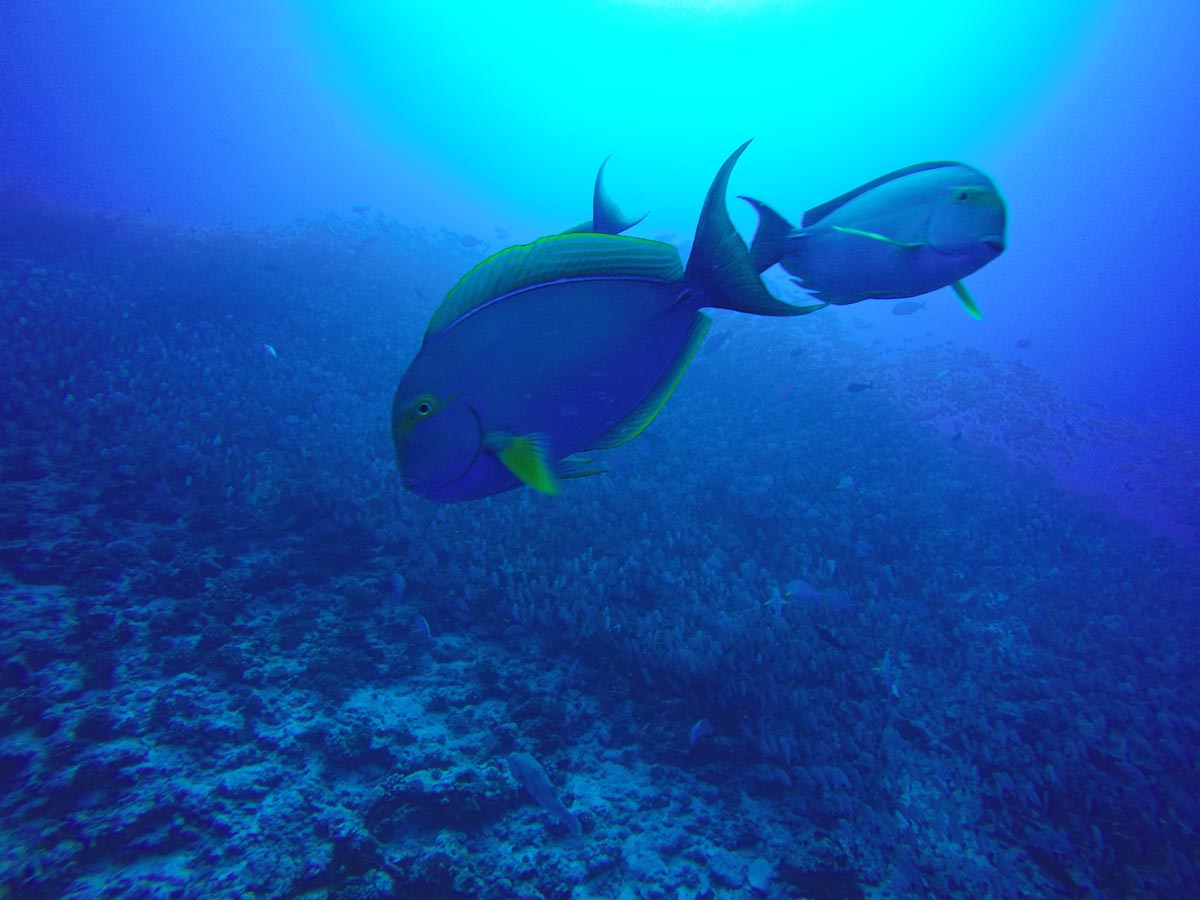
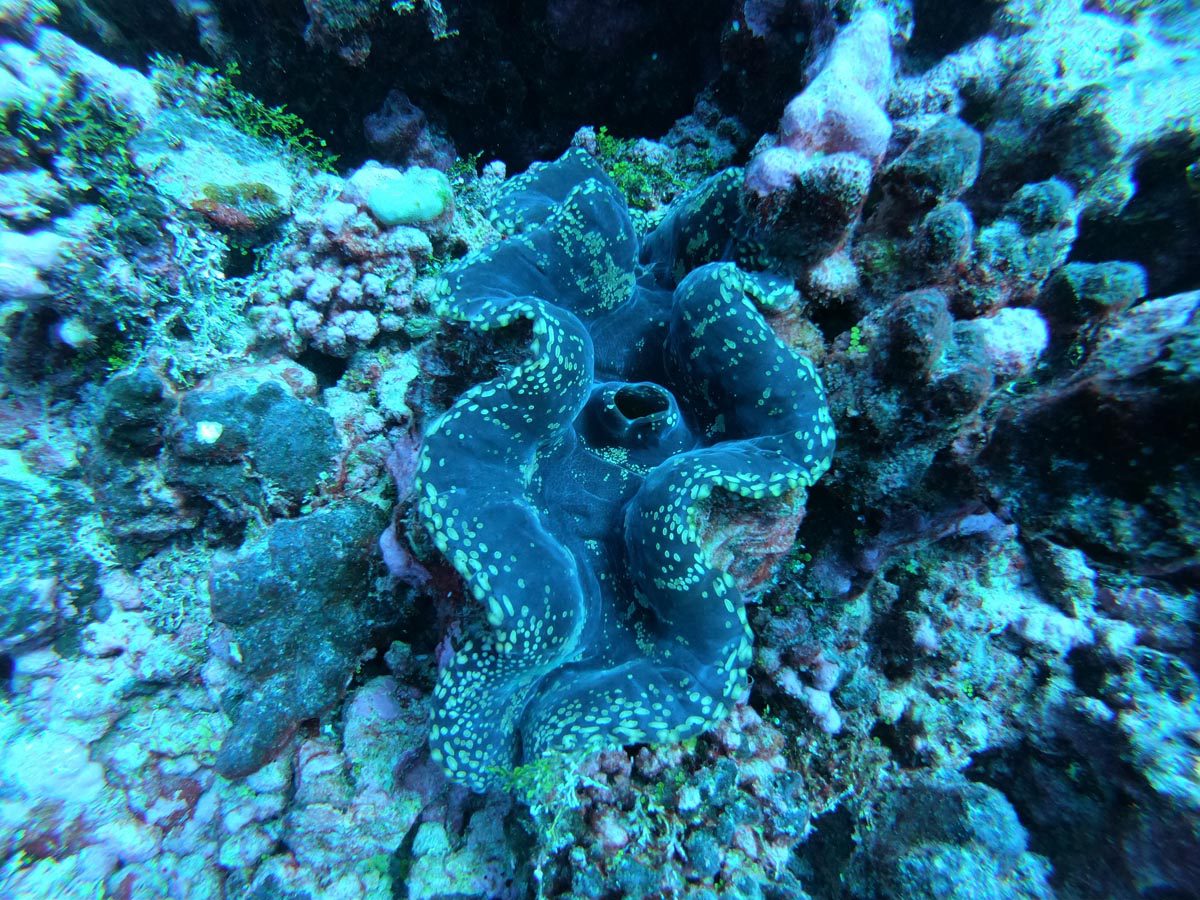
Drift Dives
When the current is right, you’ll begin the dive at The Angle and drift into the lagoon. Experienced divers might enter from the deepest section of the pass, where dolphins are sometimes present. Other divers will drift along the reef, passing by channels and overcoming the outgoing current. It’s pretty challenging and fun. When the current is pushing out, you grab onto whatever is near you, and when the current is pulling in, you ride it like Superman.
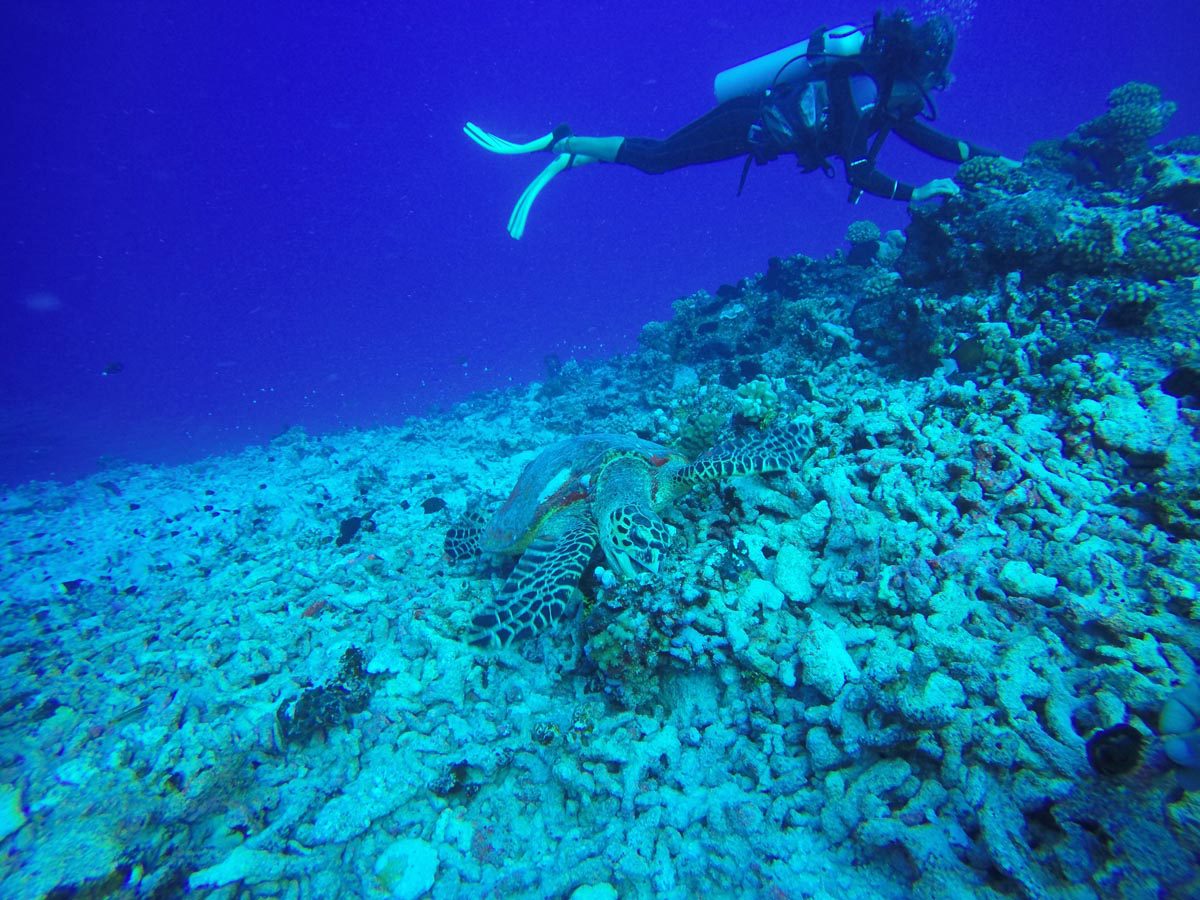
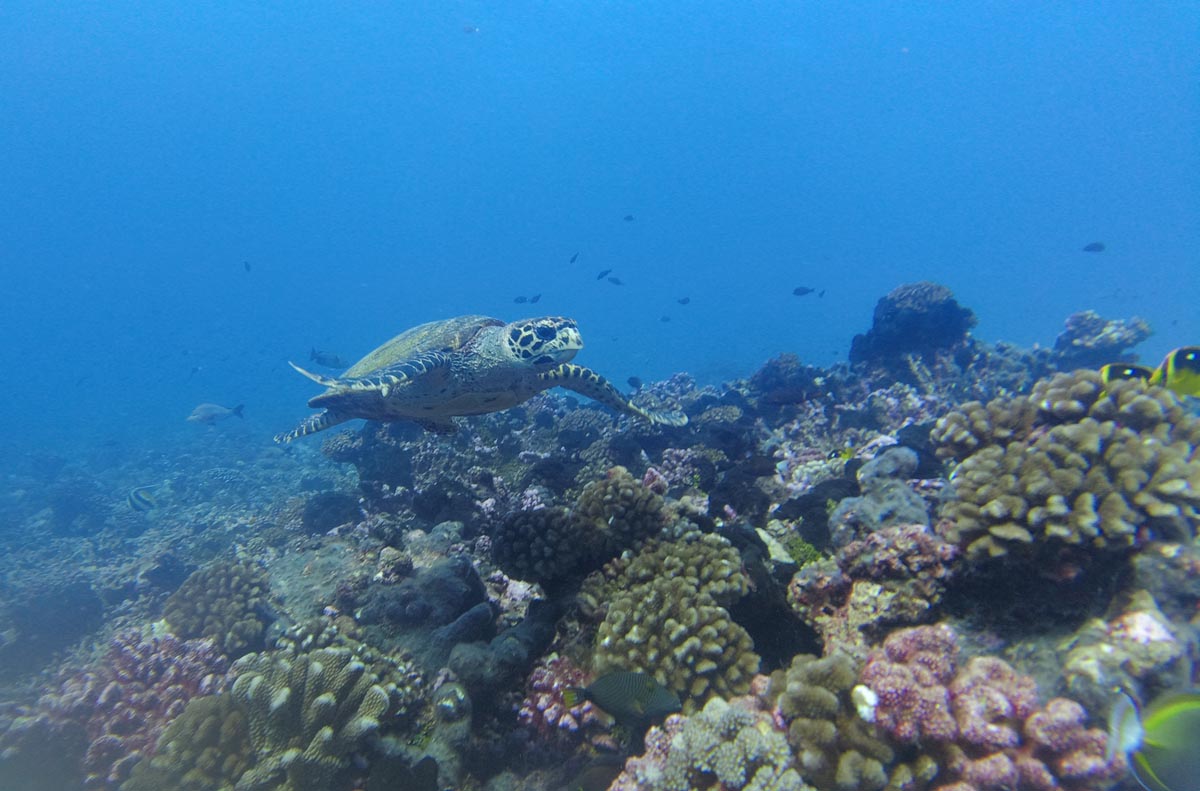
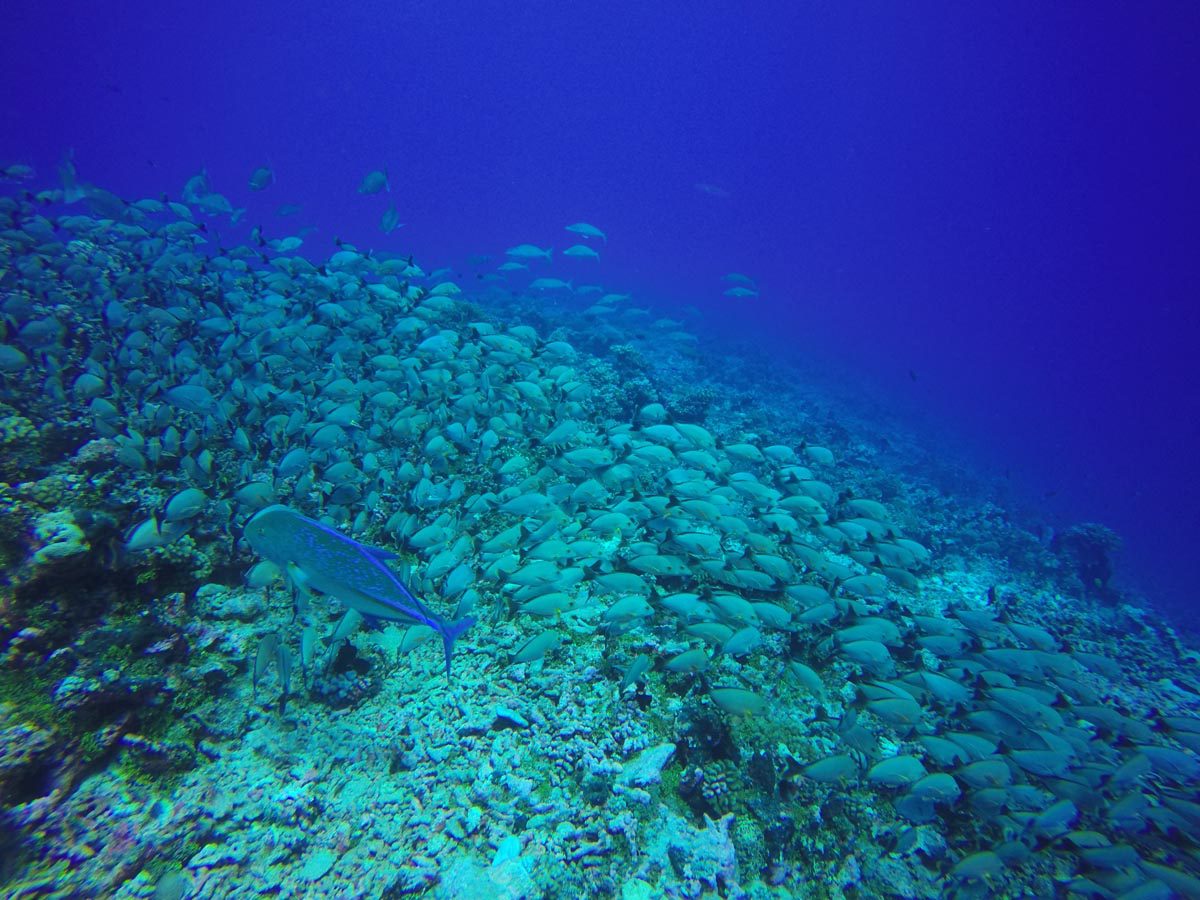
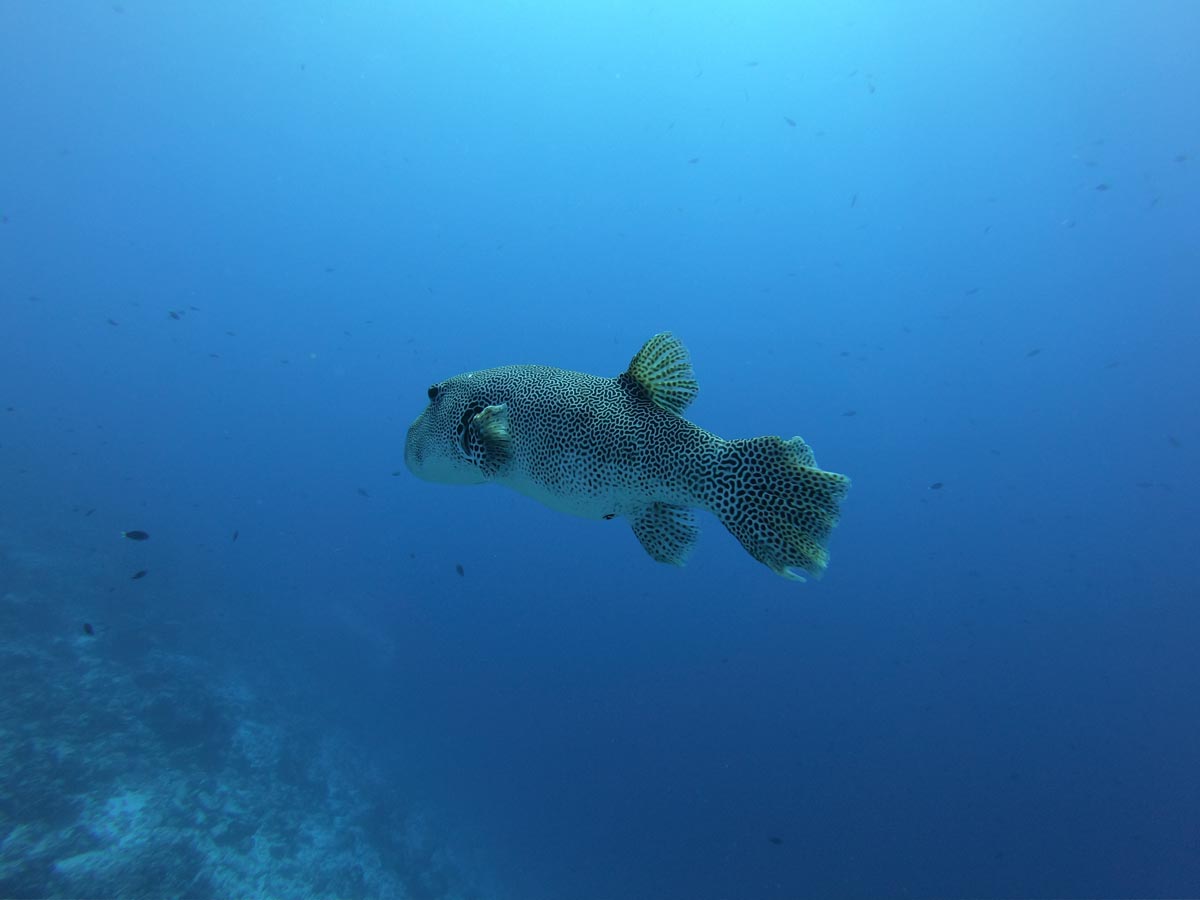
Sunset Dives
Sunset dives give you a glimpse into life on the reef when the “shifts are changing”. It’s a hit or miss, but if you’re lucky, you’ll see many sharks and perhaps dolphins in addition to the usual reef residents. Sunset dives are also a great way to “squeeze” more dives if you’re limited in time.
Scuba Diving In The Avatoru Pass
Dives in the Avatoru Pass are less frequent but equally impressive, thanks to the frequent close encounters with silvertip sharks. These sharks look like full-on predators and love hanging around the lagoon pass in the morning hours. Inquire about trips to the Avatoru Pass and book your spot.
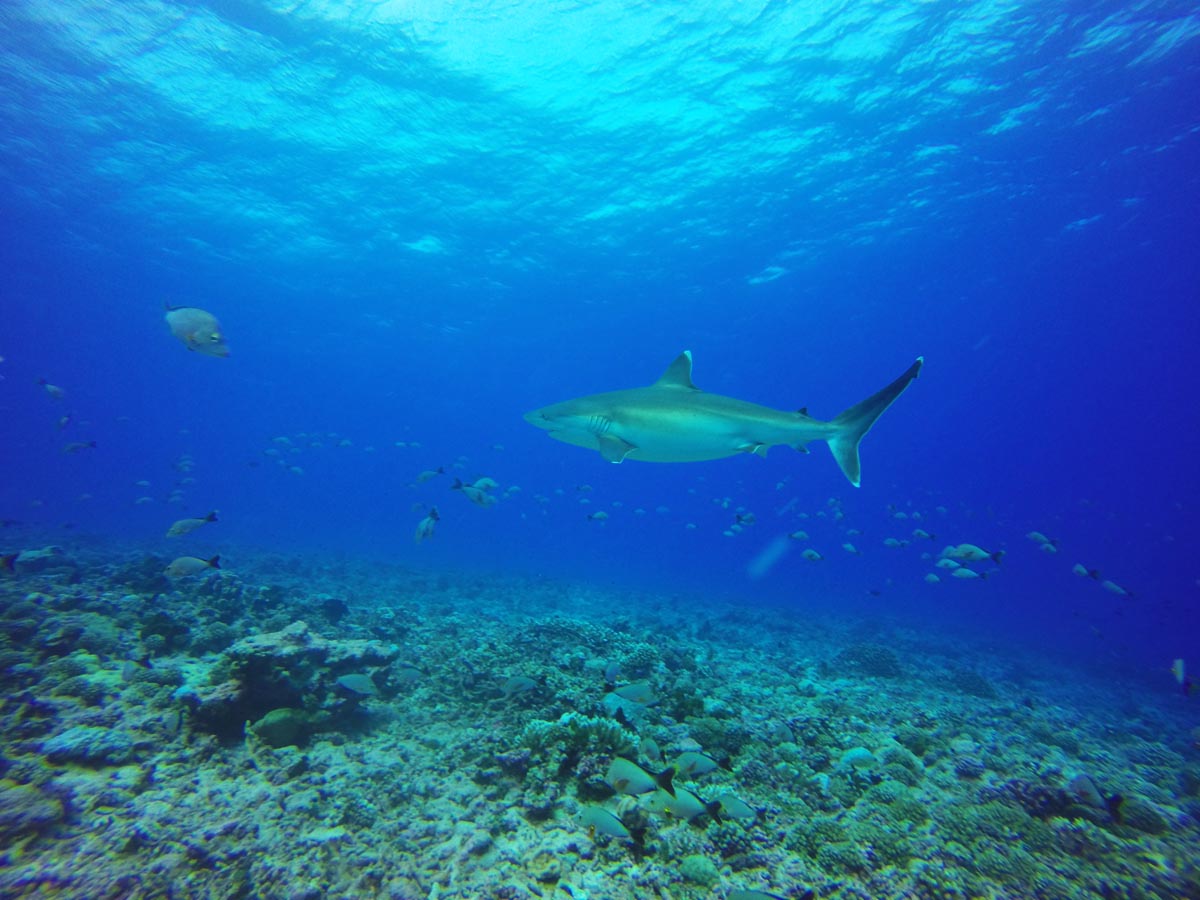
Here’s a video that summarizes all the highlights of my scuba diving in Rangiroa
The Blue Lagoon – Le Lagon Bleu
Visiting the Blue Lagoon is one of the top things to do in Rangiroa. It is by far the most popular excursion on the atoll, with daily departures offered by multiple suppliers (book your tour online). The Blue Lagoon is essentially a tiny lagoon trapped inside Rangiroa’s massive lagoon, a stereotypical paradise reminiscent of those picture-perfect images you see on screensavers. You have to experience it if you’re already here.
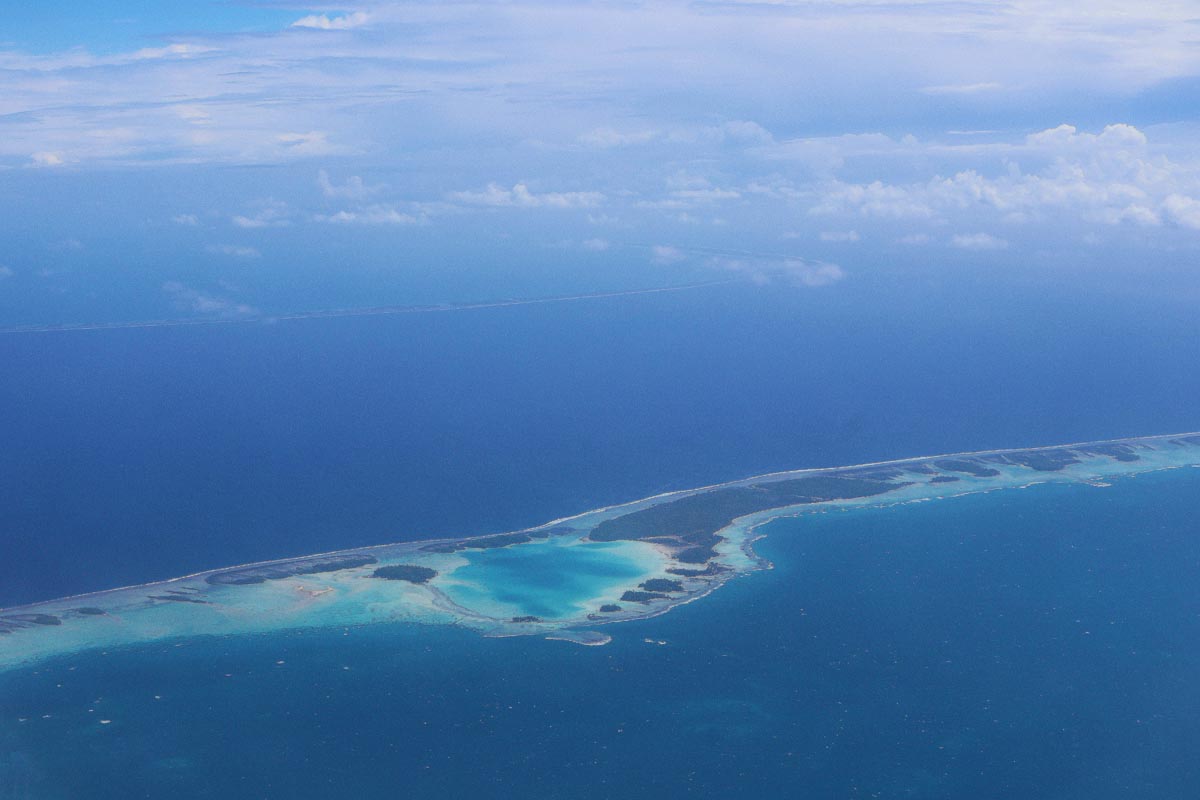
Jumping Dolphins
The Blue Lagoon is about one hour by speed boat southwest of the main motu. When the lagoon is choppy, it can be a very long and bumpy ride, and it is usually slightly “rougher” on the return leg during the dry season (June-Oct). The tour begins in Tiputa Pass, where, with some luck, the resident dolphins will start the day on a positive note.
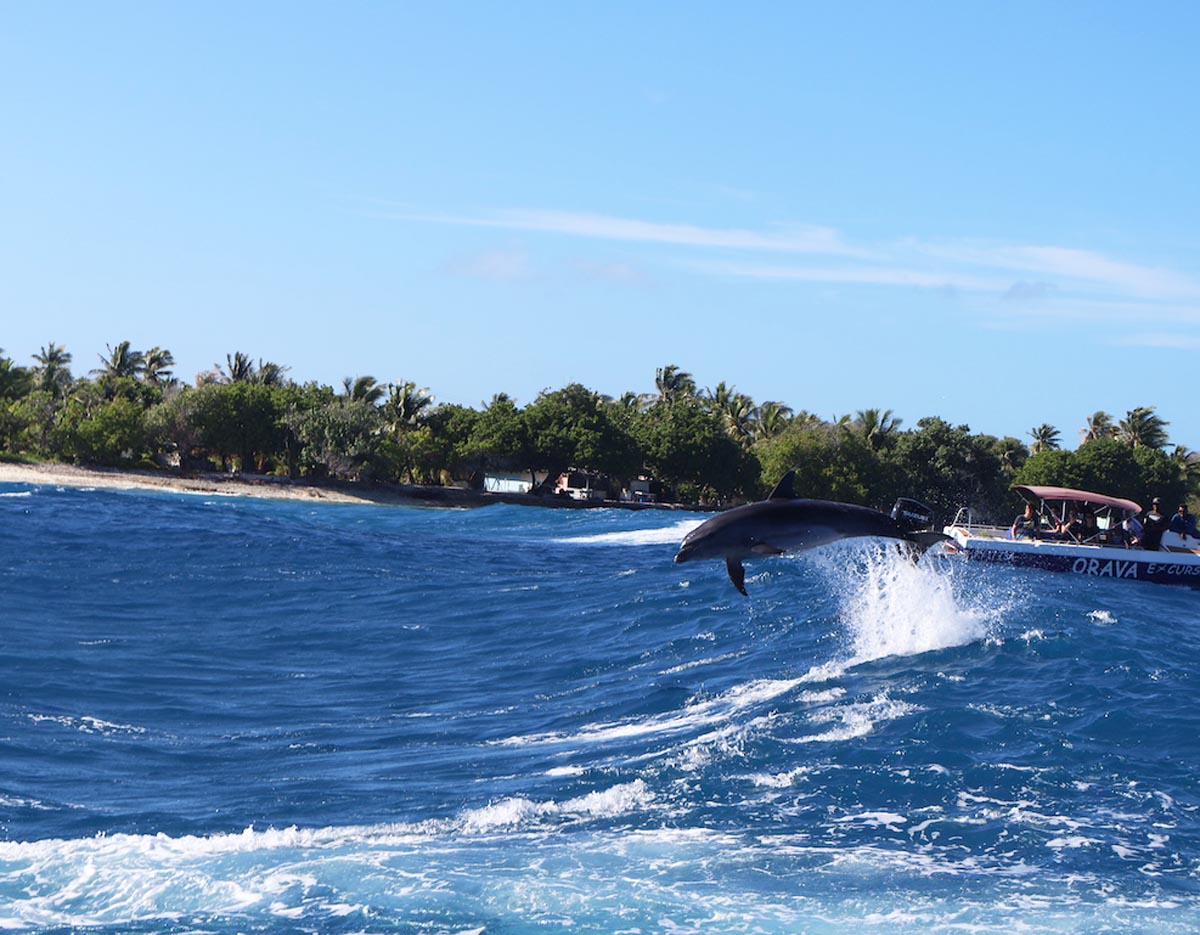
Tropical Paradise
Upon reaching the Blue Lagoon, the well-orchestrated operation begins. After securing the boat, you’ll carefully descend from the boat and have some free time to explore the magical setting. The snorkeling isn’t great due to the shallow waters, but the lagoon colors, white sand beach, and coconut palms swaying in the gentle breeze more than make up for that. Several bird species also visit the Blue Lagoon.
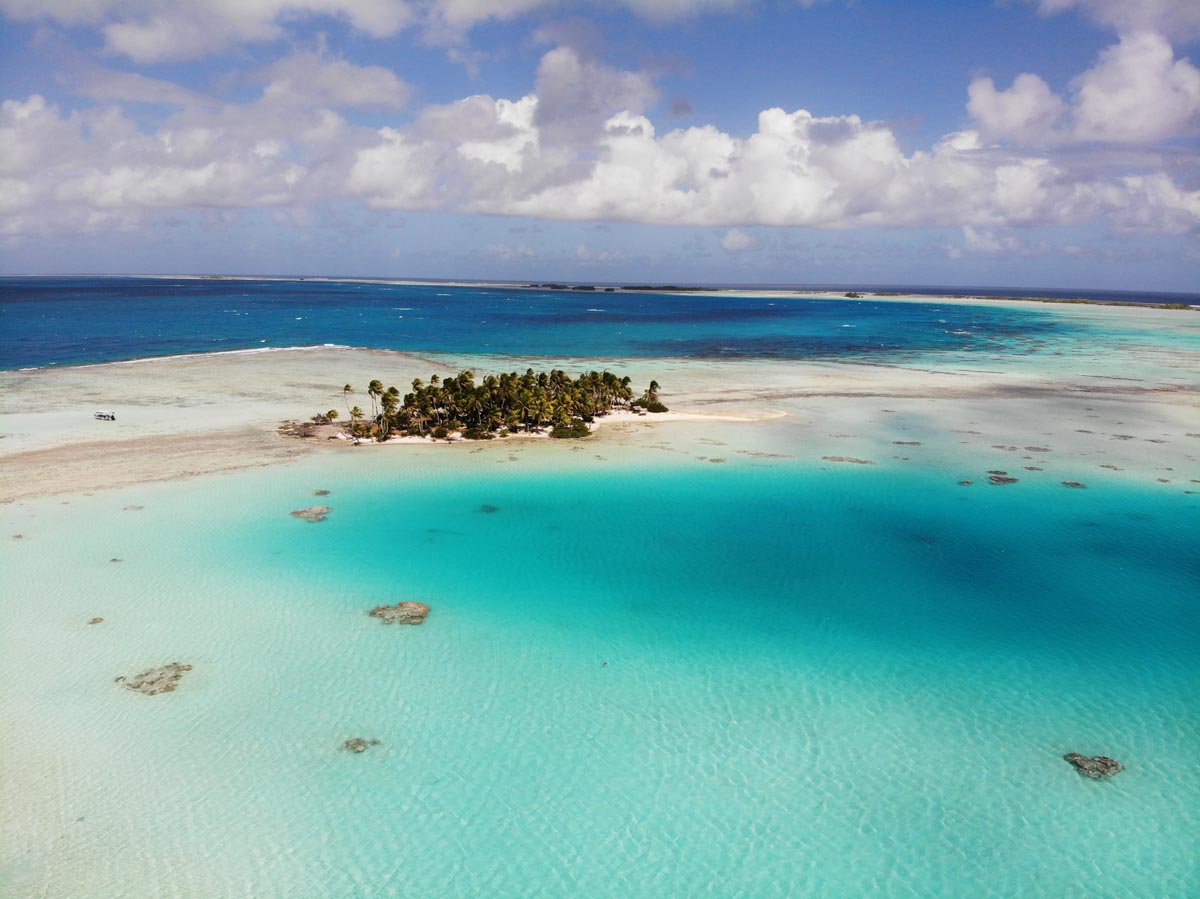
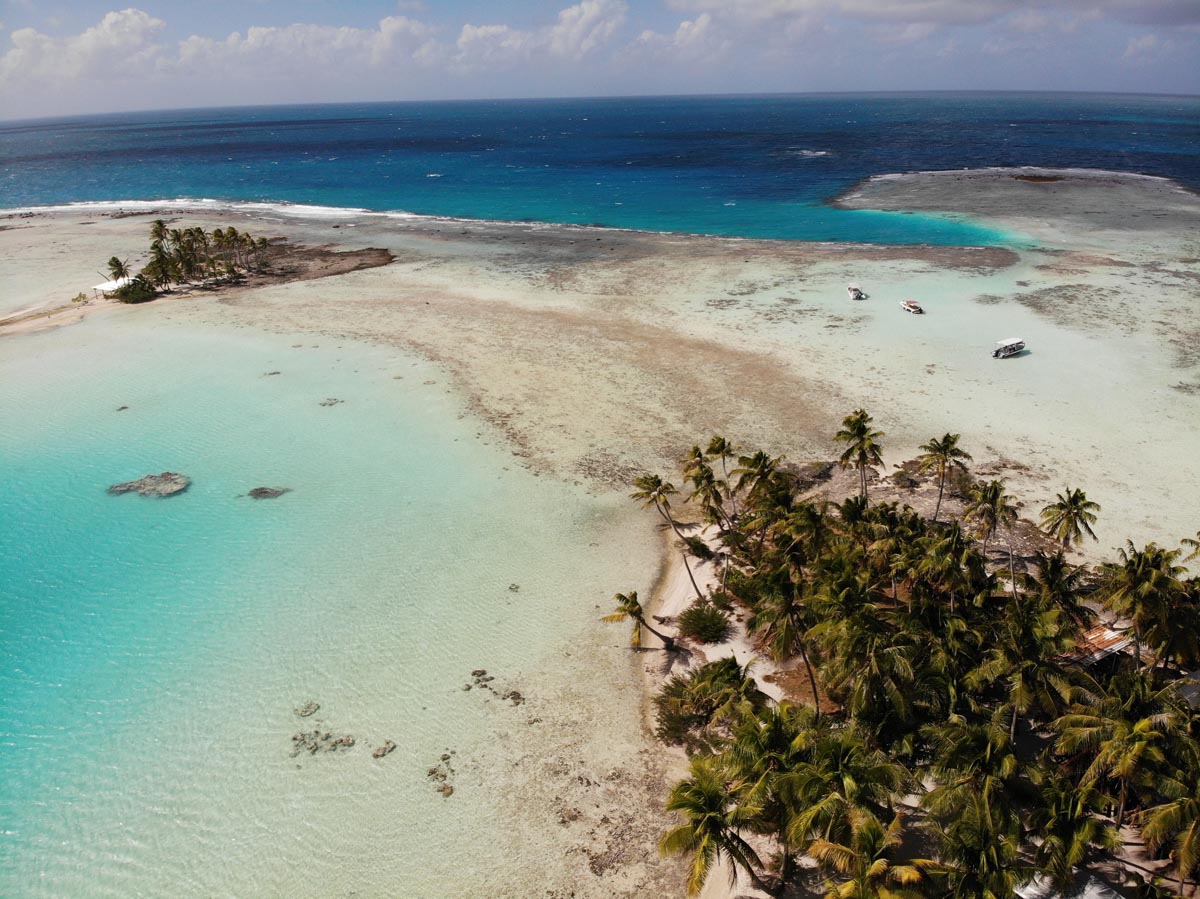
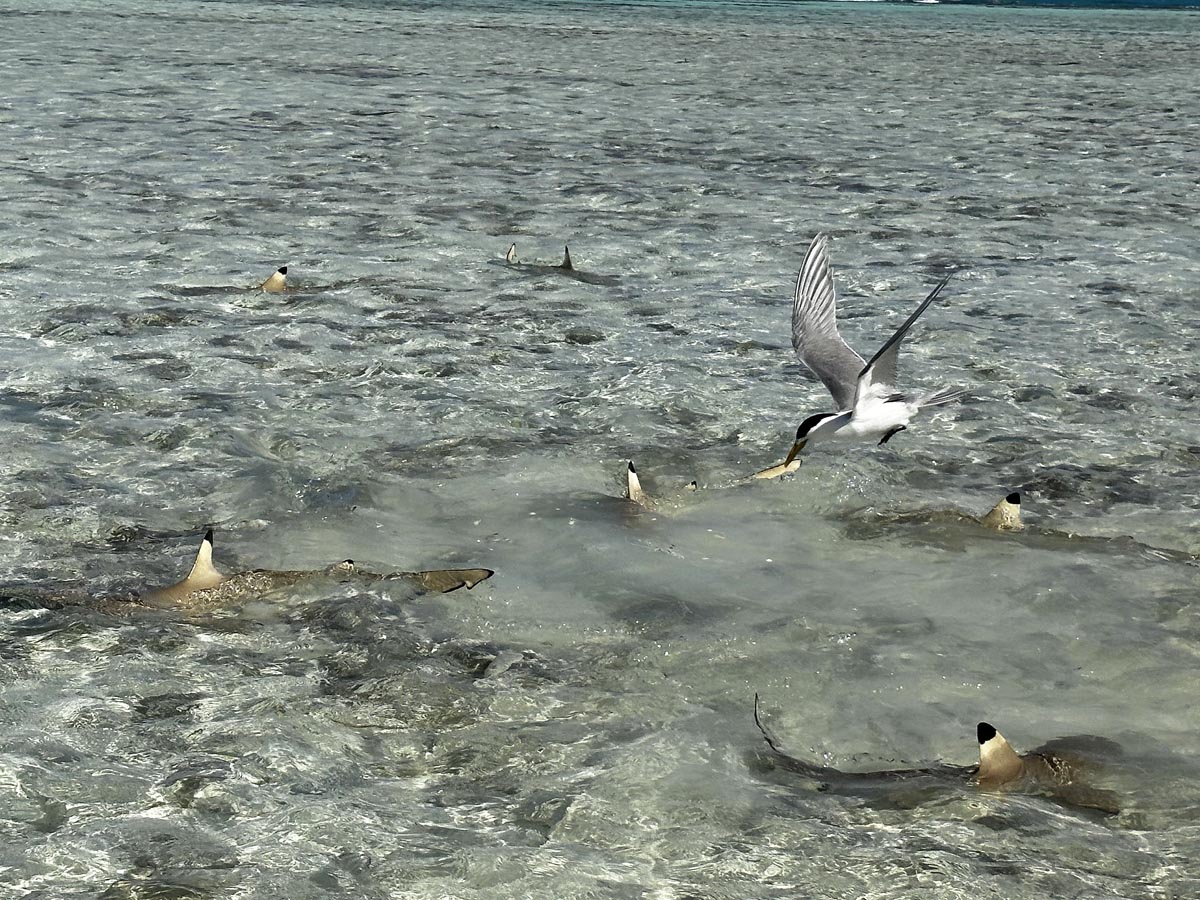
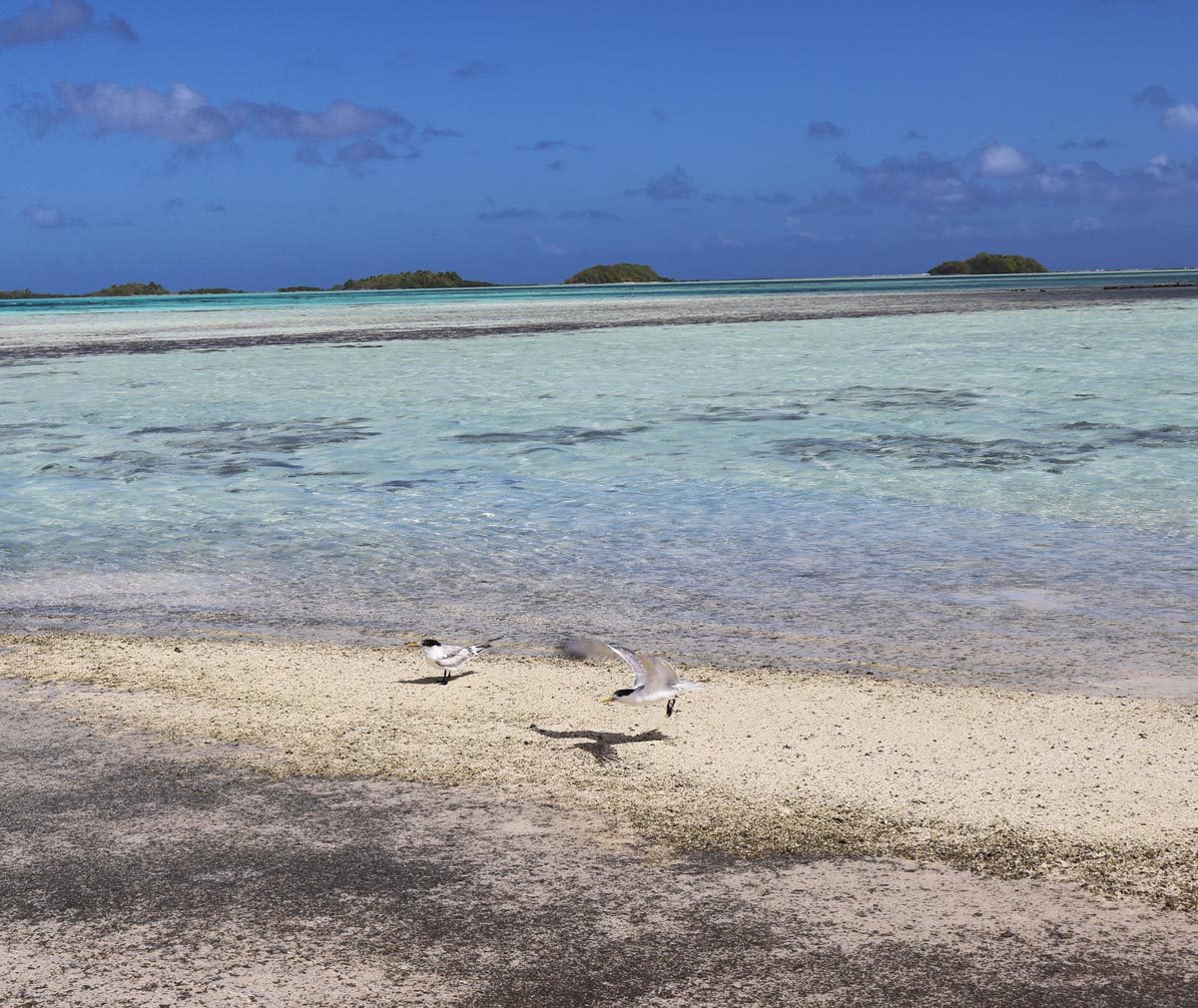
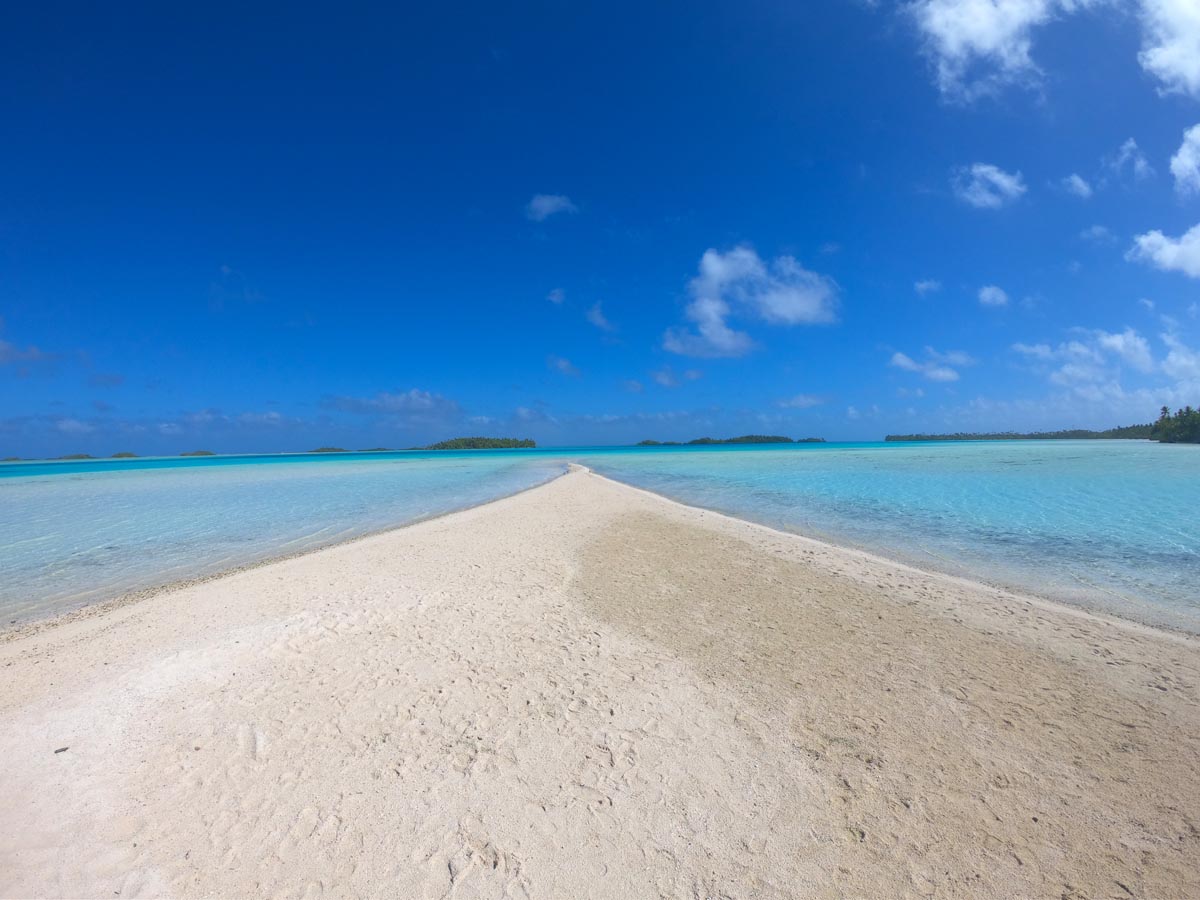
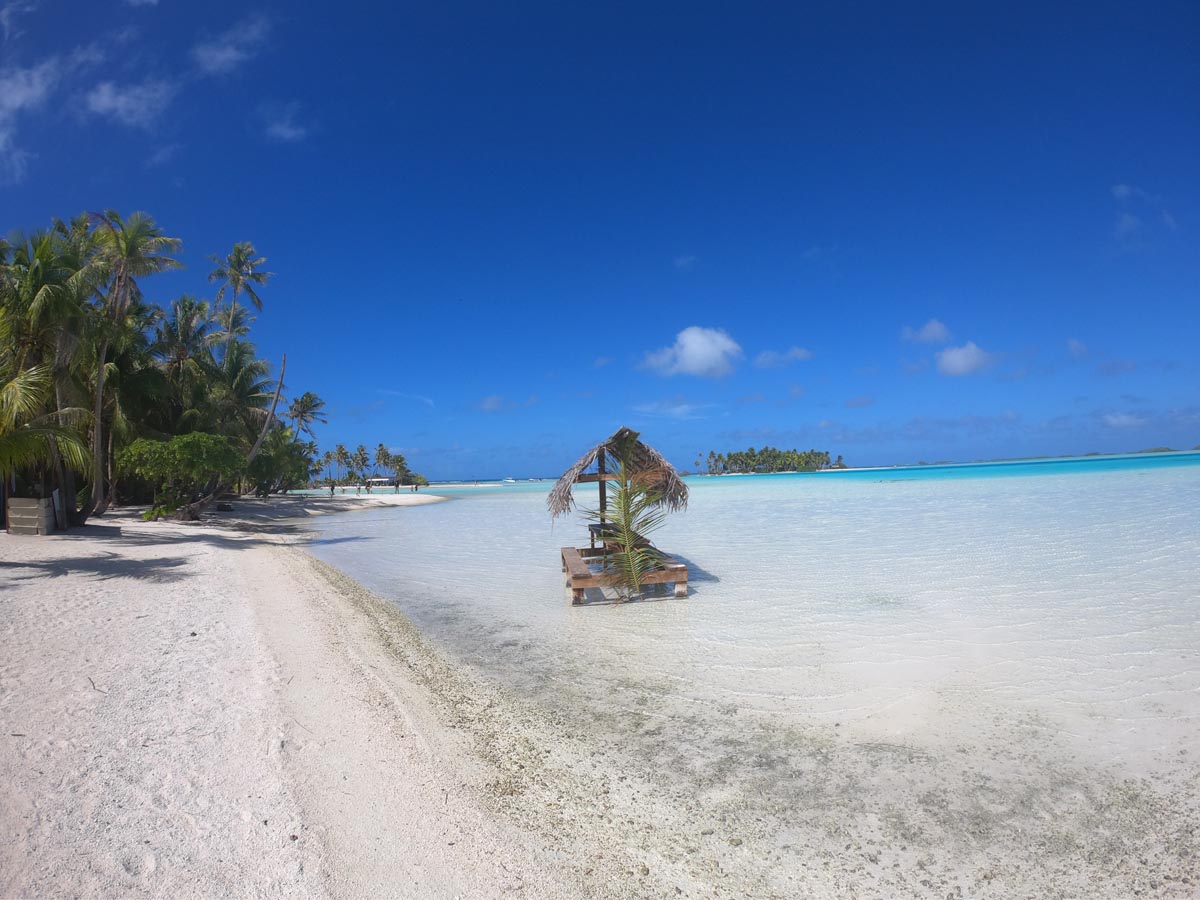
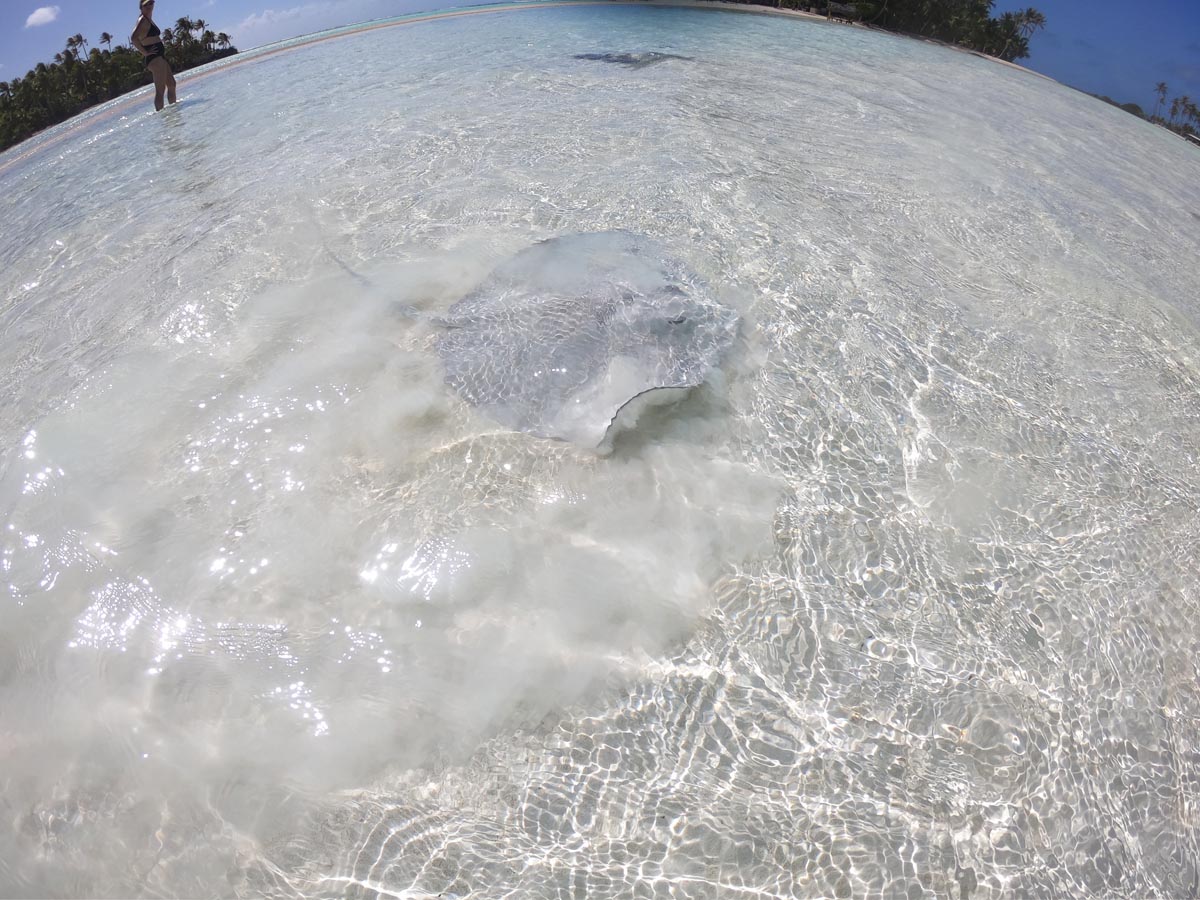
While you’re exploring paradise, the crew begins to prepare a plentiful and delicious BBQ lunch. Cultural entertainment is also part of the act and can vary between ukulele tunes, coconut weaving sessions, or beach dancing. The crew goes out of their way to ensure the fun never stops. On the way back, tours usually stop at The Aquarium to snorkel in the coral garden or head out of the Tiputa Pass to witness how thousands of birds go fishing.
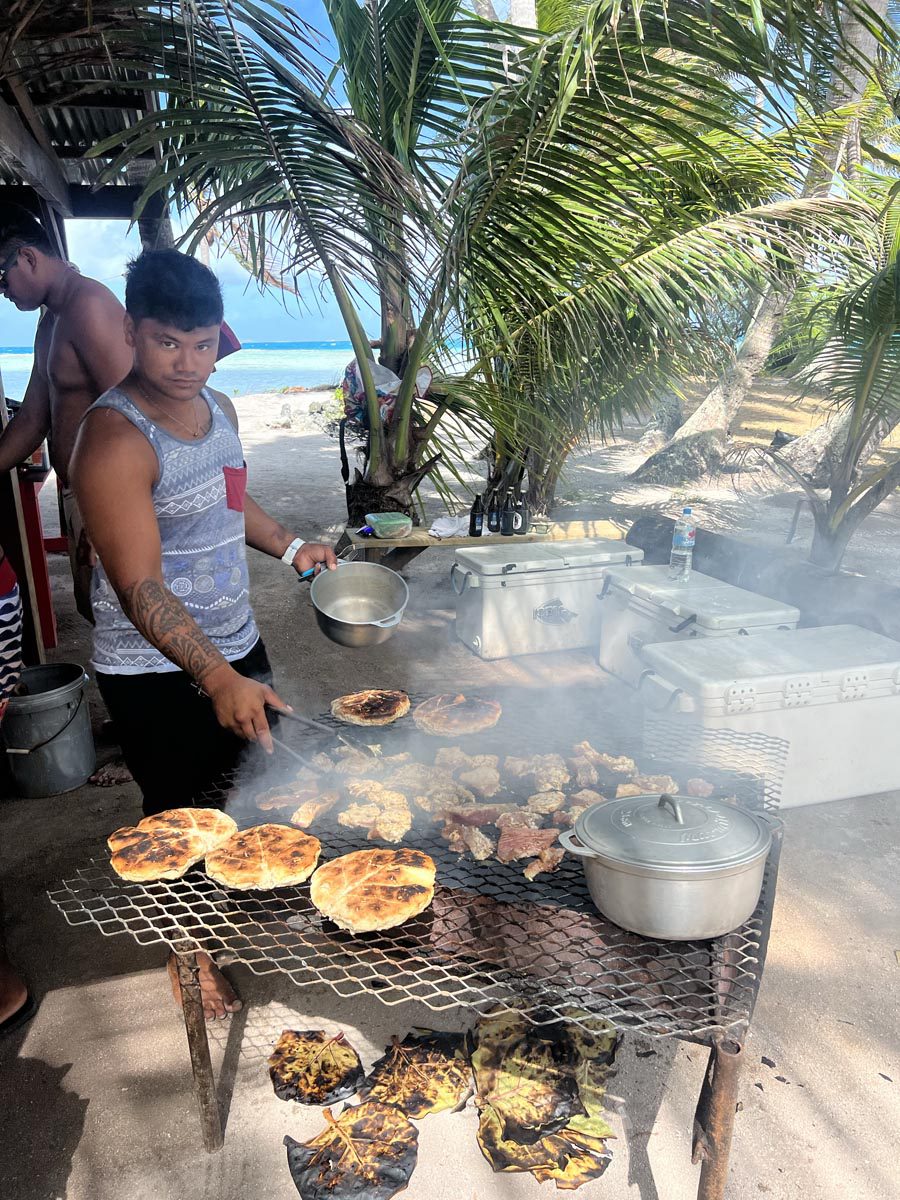
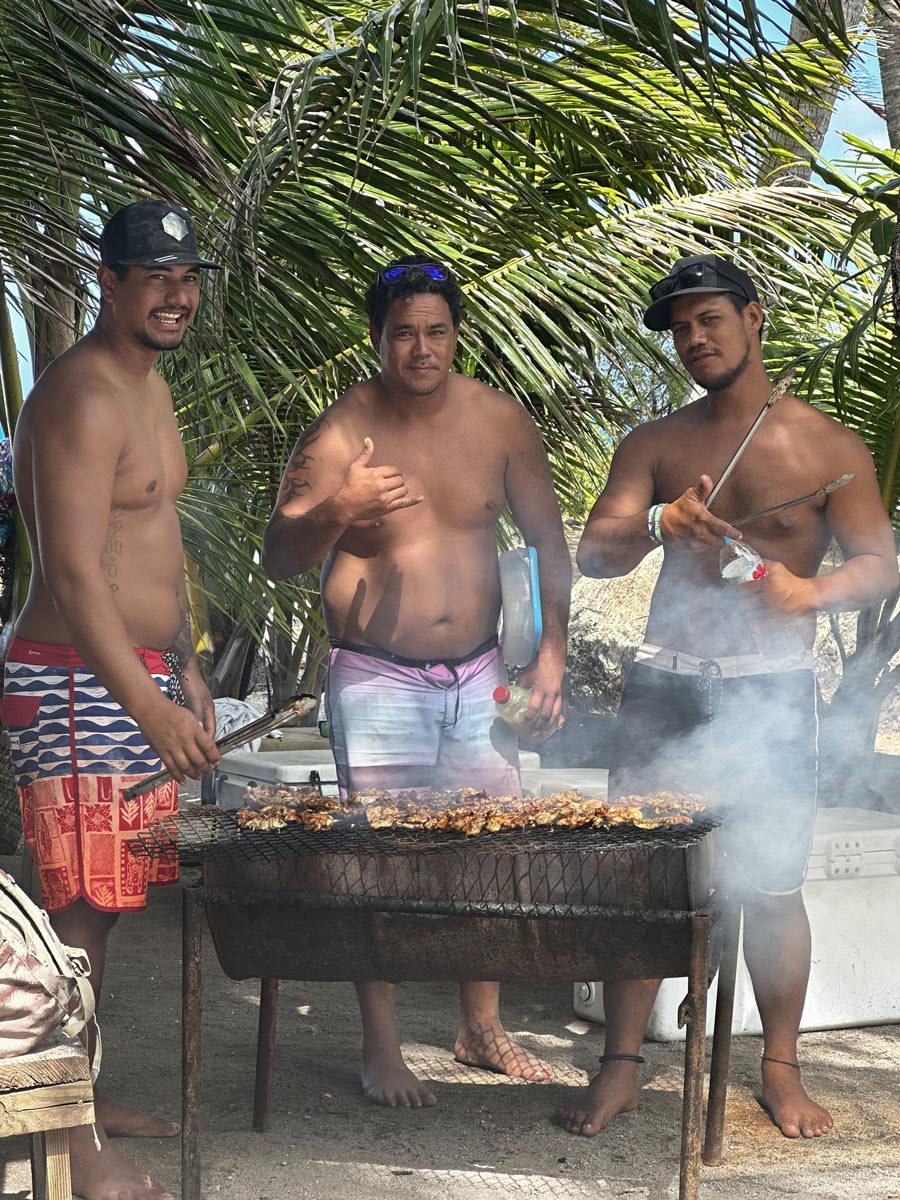
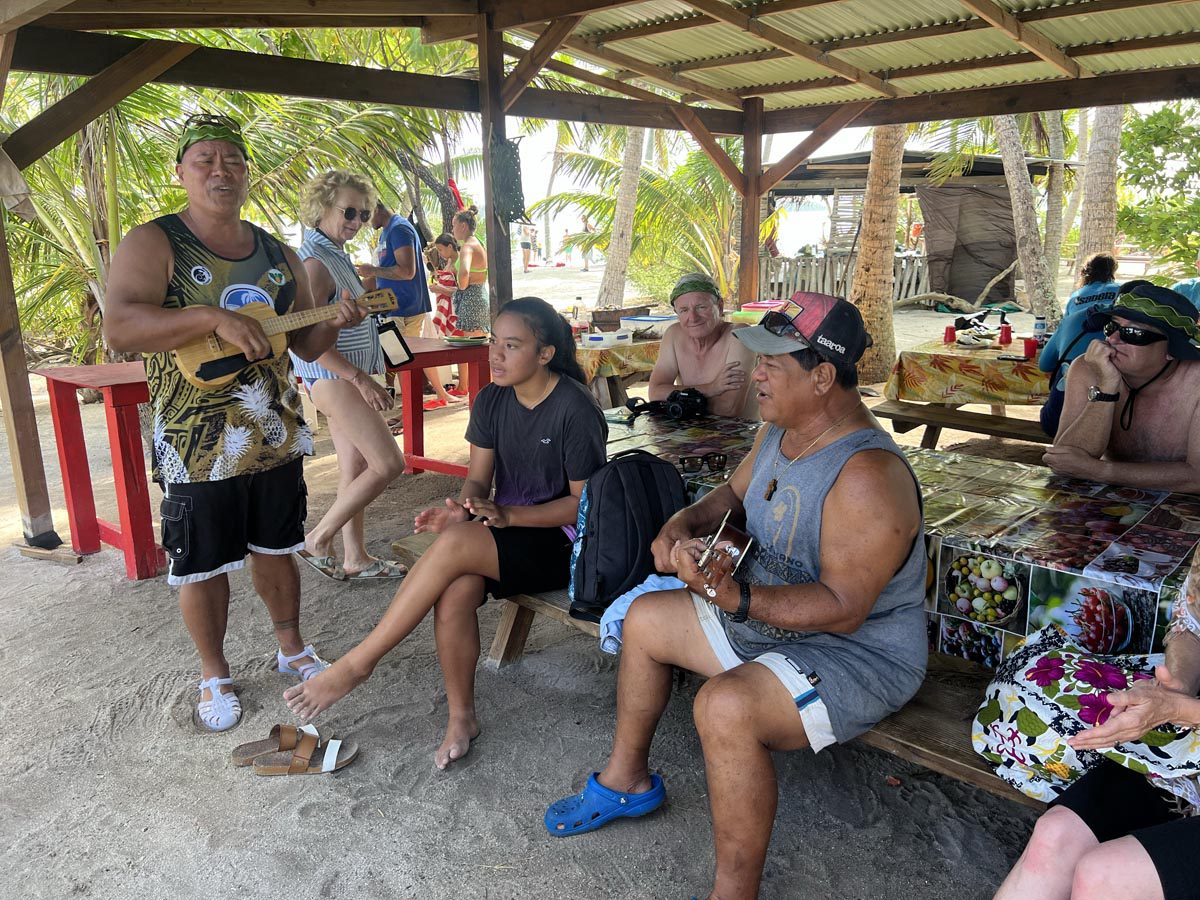
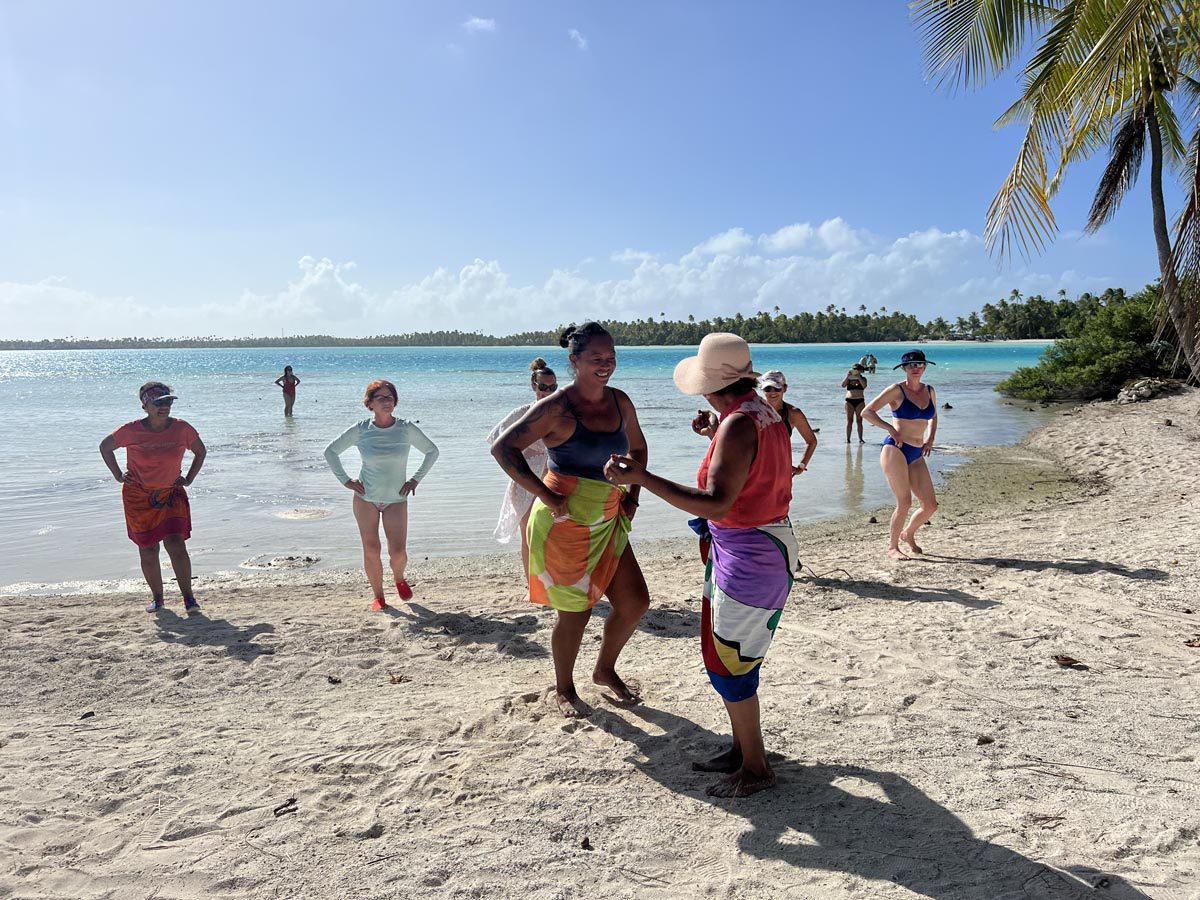
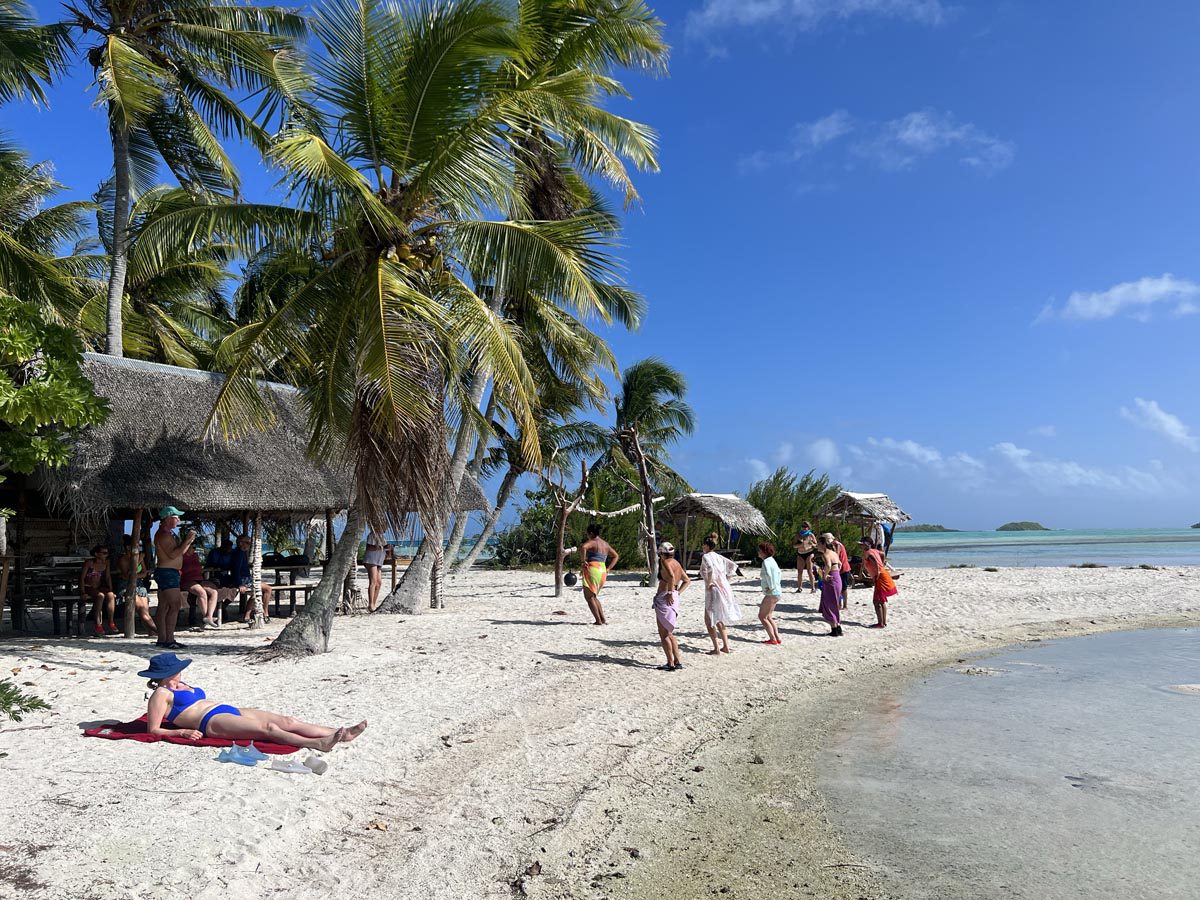
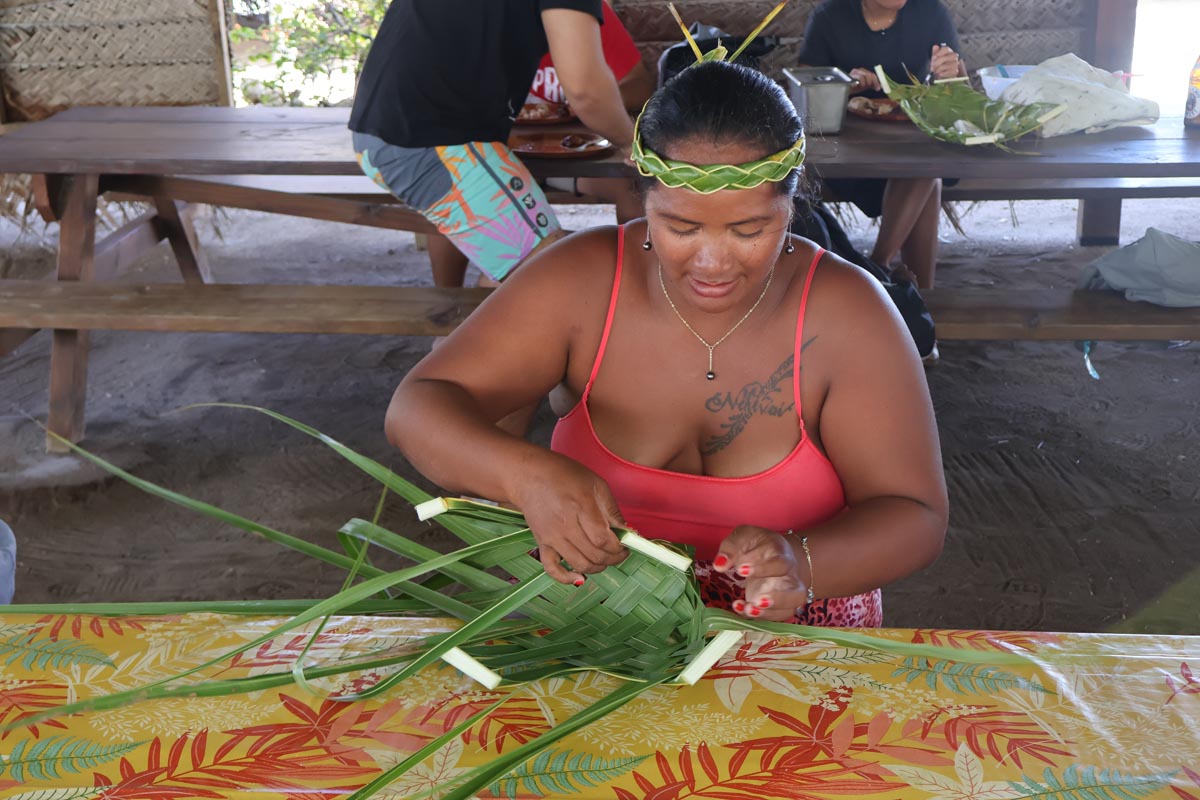
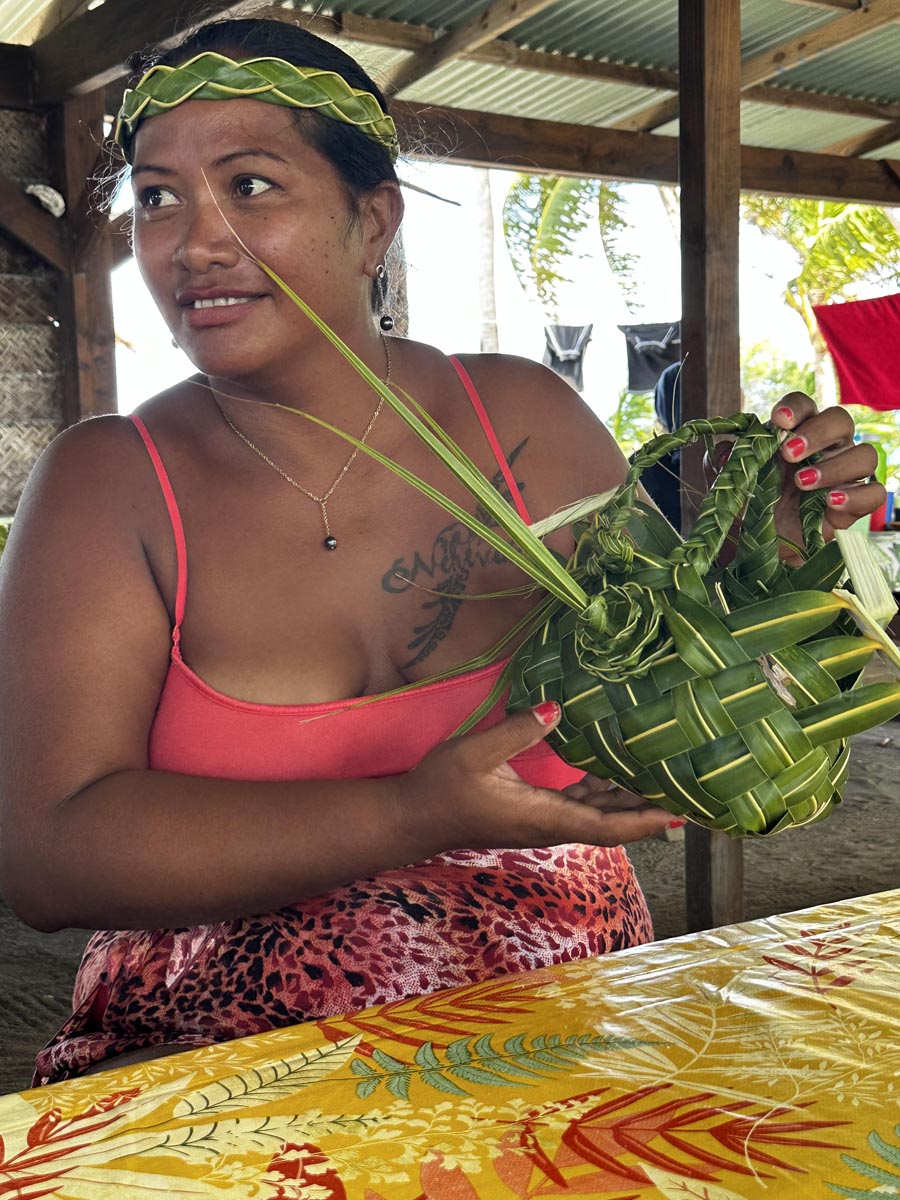
Logistics: prepare for a long day, departing after breakfast and returning between 4-5 pm. If you suffer from motion sickness and it’s a windy day, have a small breakfast and consider taking preventive medication. Bring a mask and snorkel (the crew usually has fins), sun protection, a beach towel or sarong, an underwater camera, and wear reef shoes. The crew has storm jackets on board.
Reef Island – Ile aux Recifs
Reef Island (Ile aux Recifs) is not an island per se but rather a collection of motu (islets) clustered at the southern end of the lagoon, about one hour by speedboat from the main village. Though the Blue Lagoon is much more popular than Reef Island, the latter is more striking, in my opinion (book your tour online).
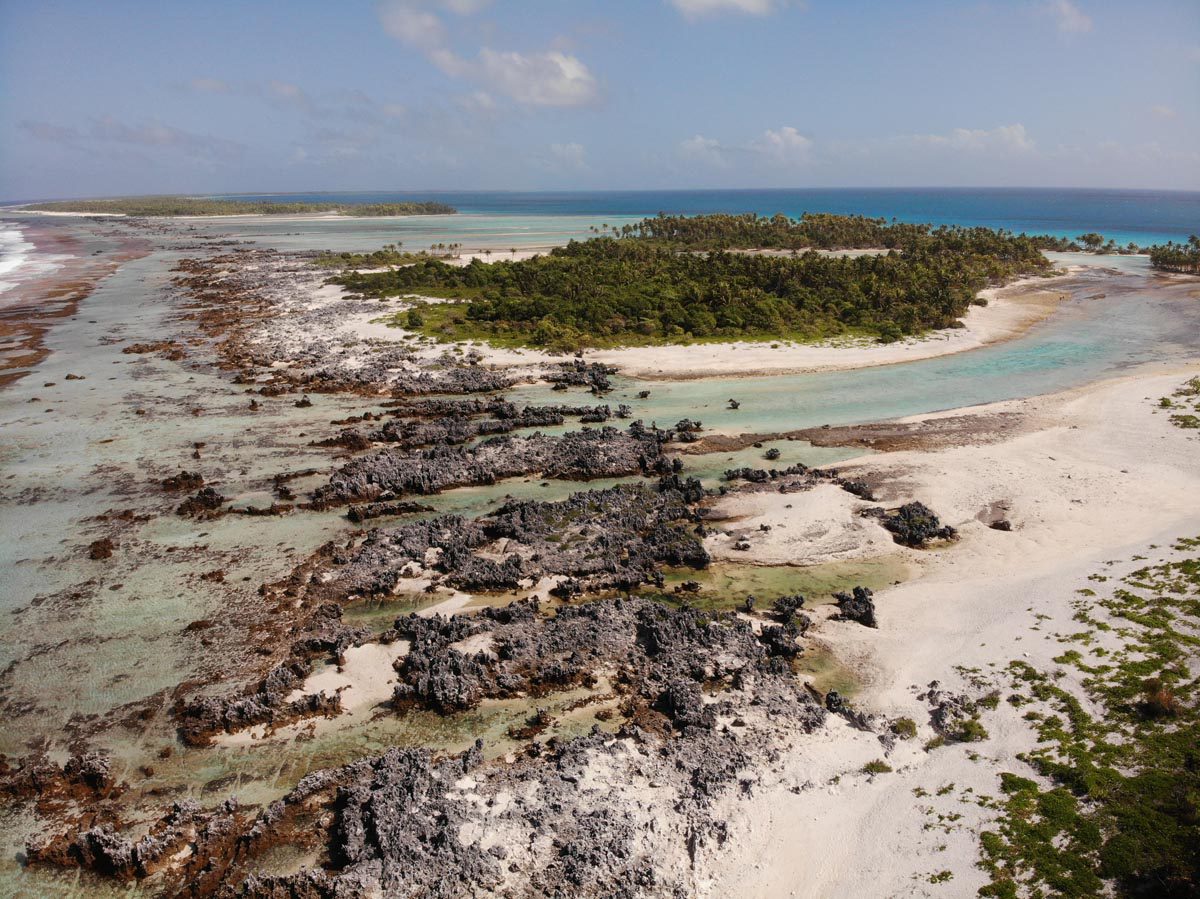
At Reef Island, ancient fossilized coral has been uplifted two meters above the waterline, creating crystal-clear shallow pools. The setting for this impressive natural phenomenon is a string of islets straight out of a tropical fantasy.
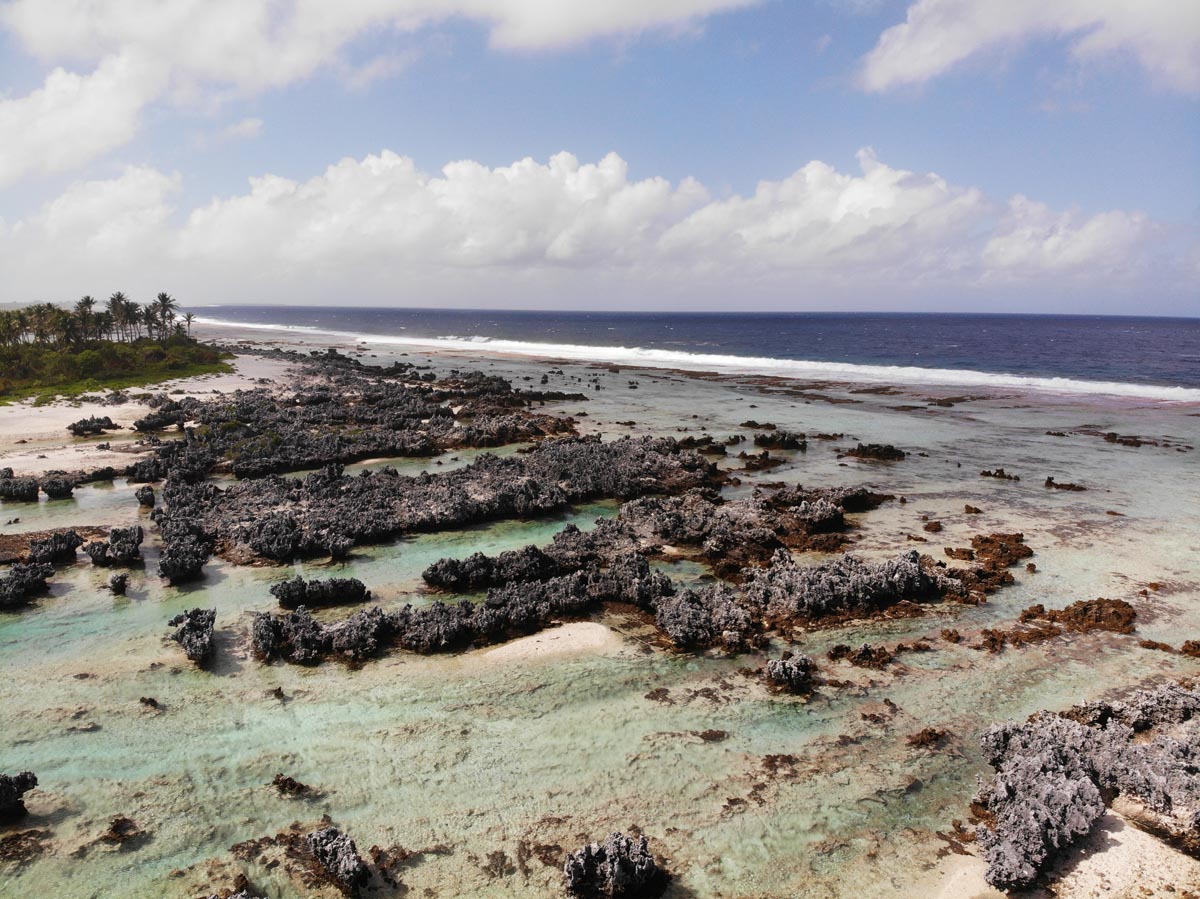
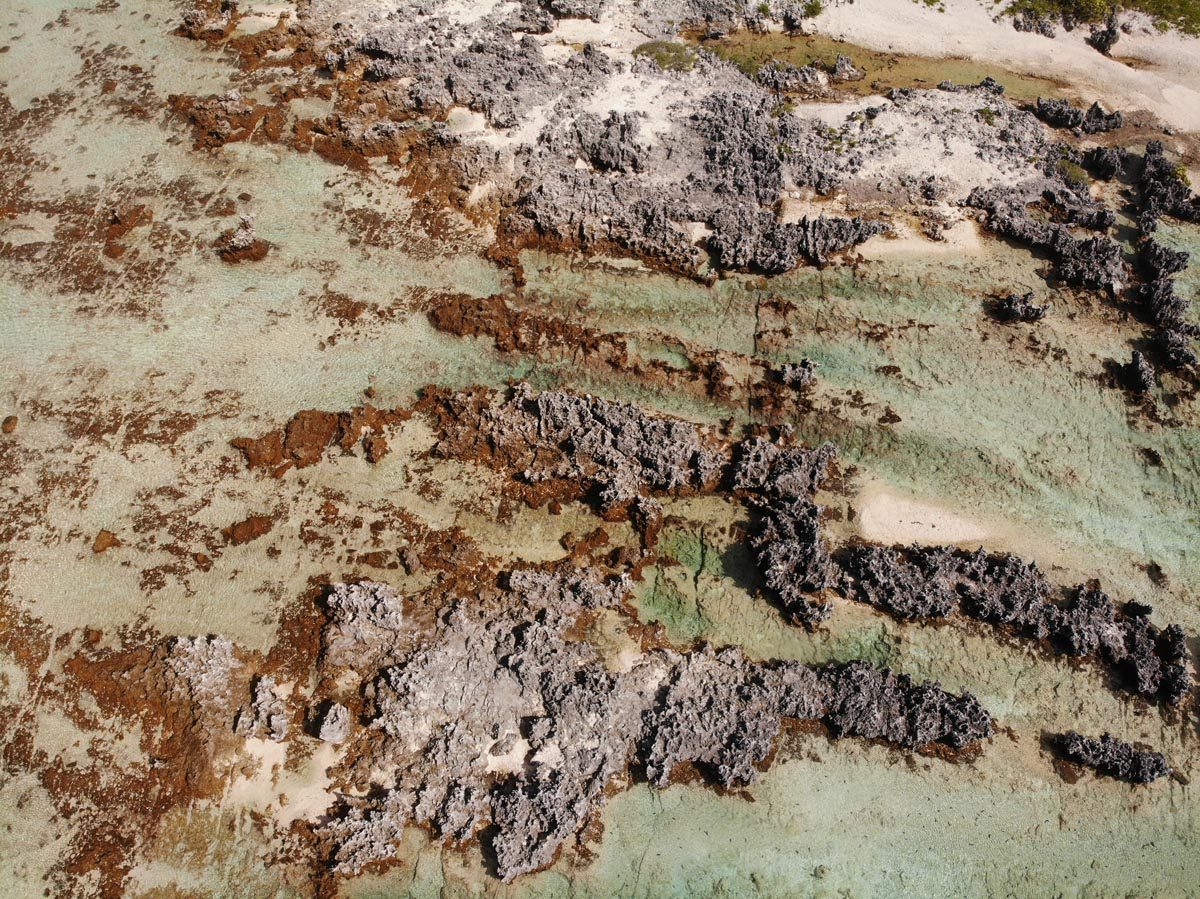
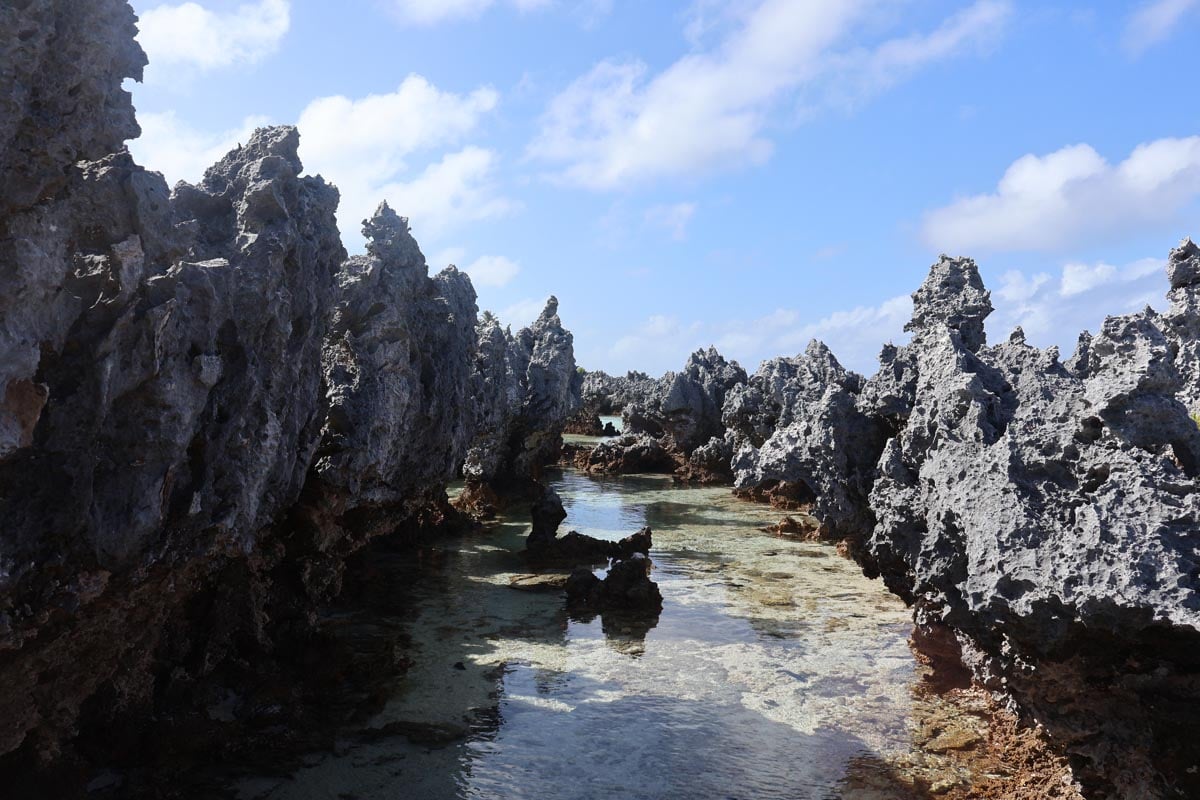
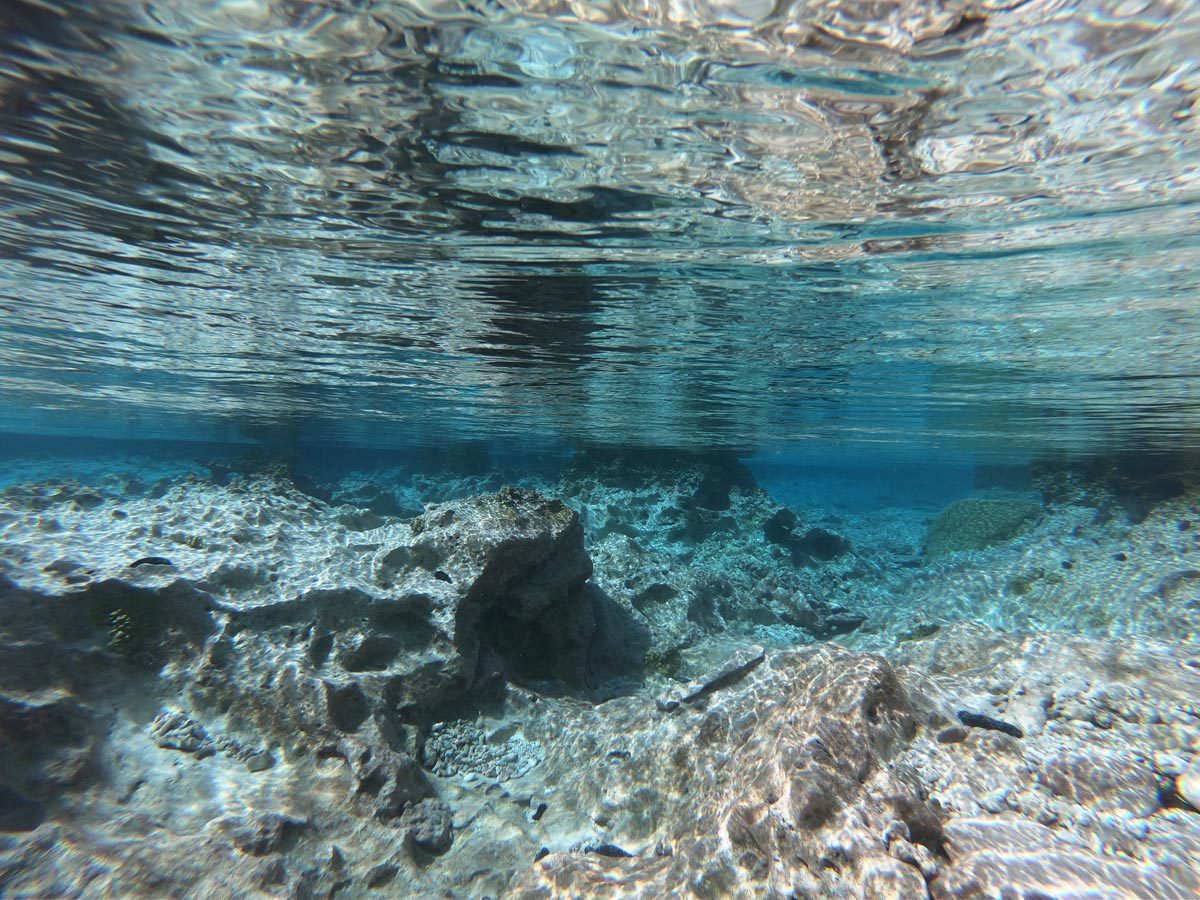
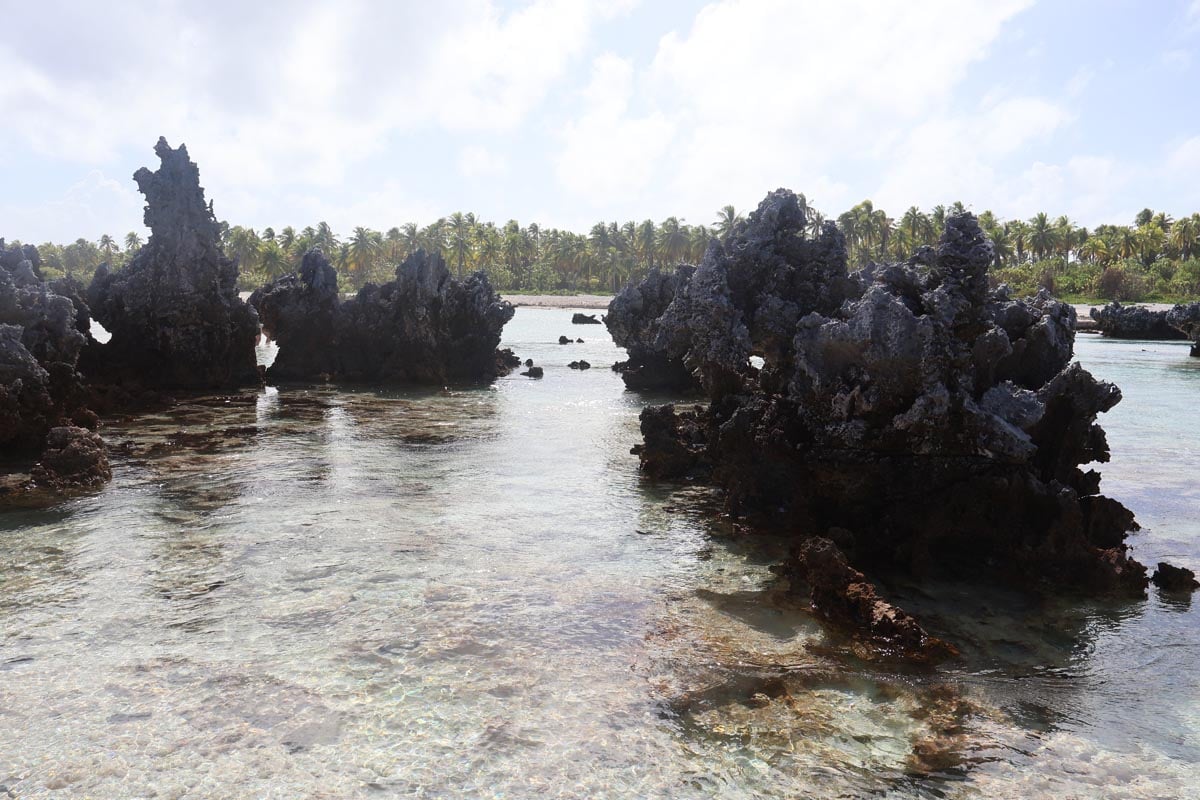
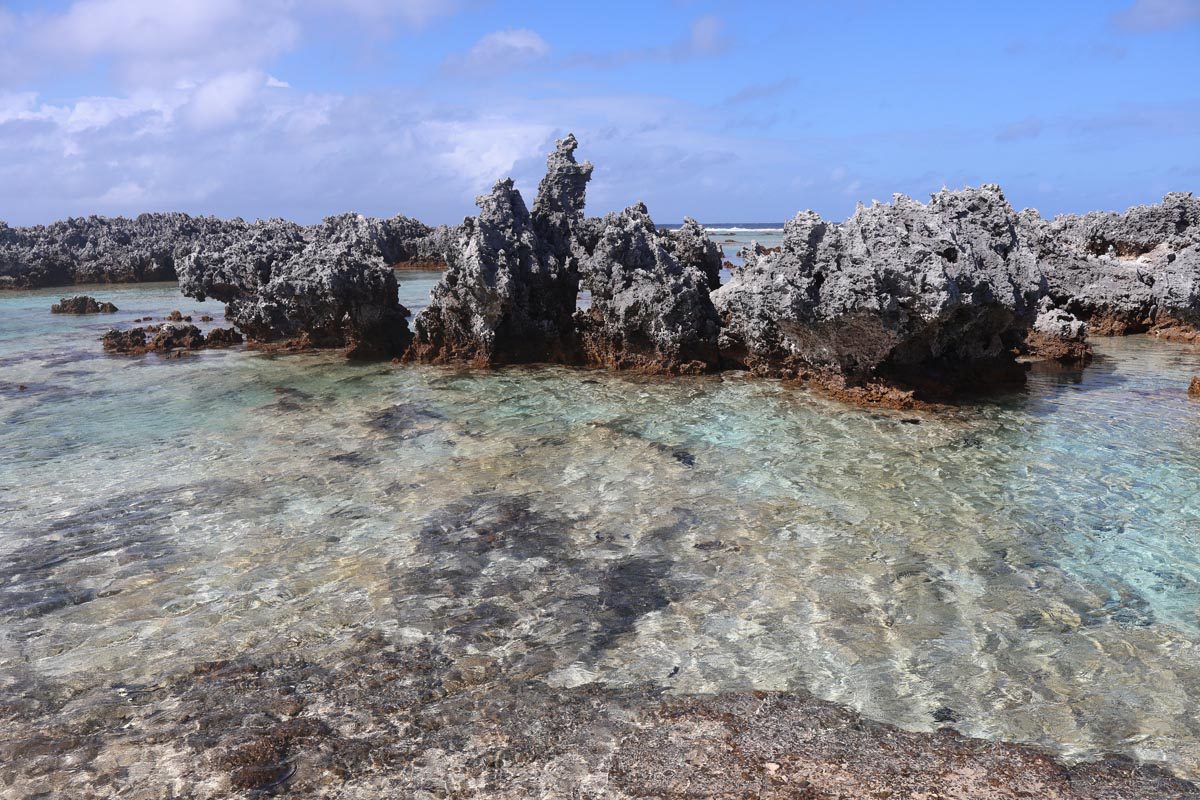
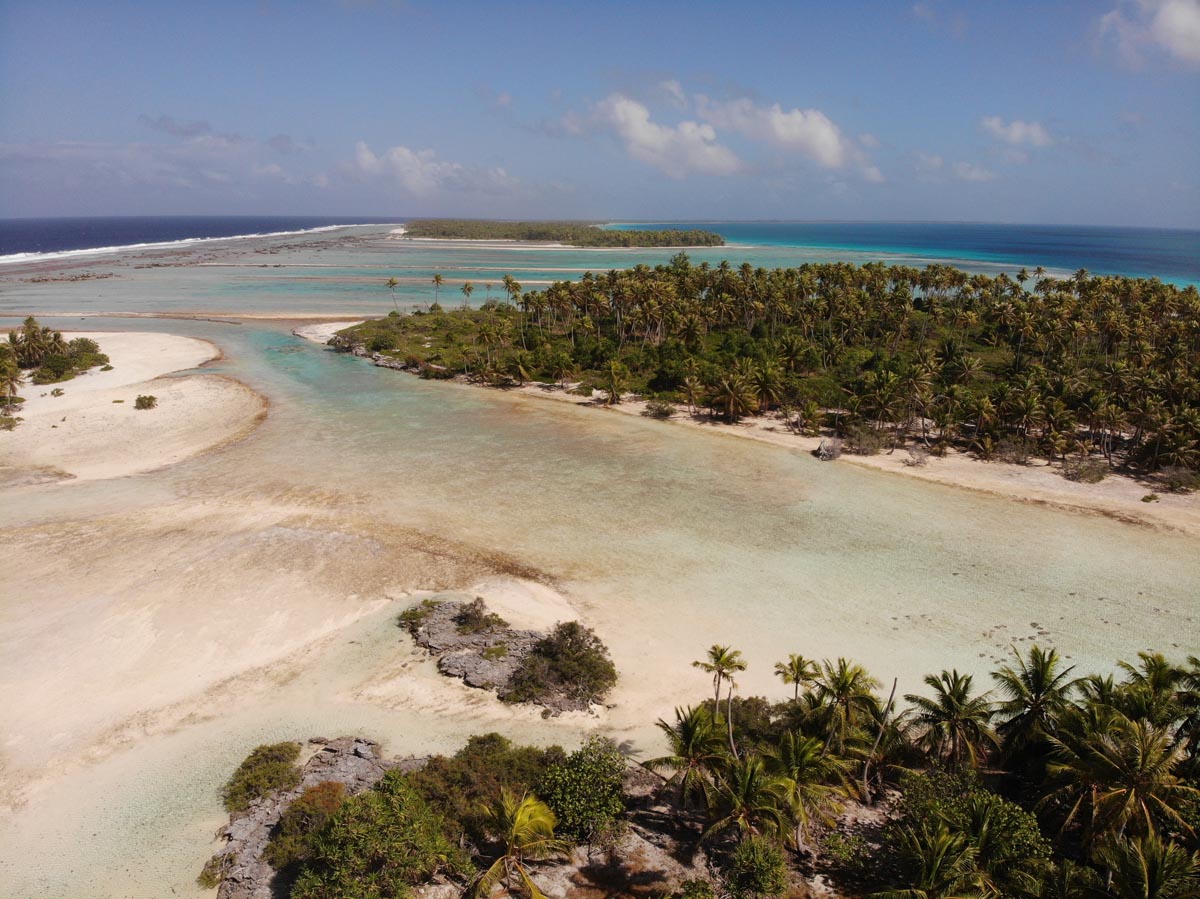
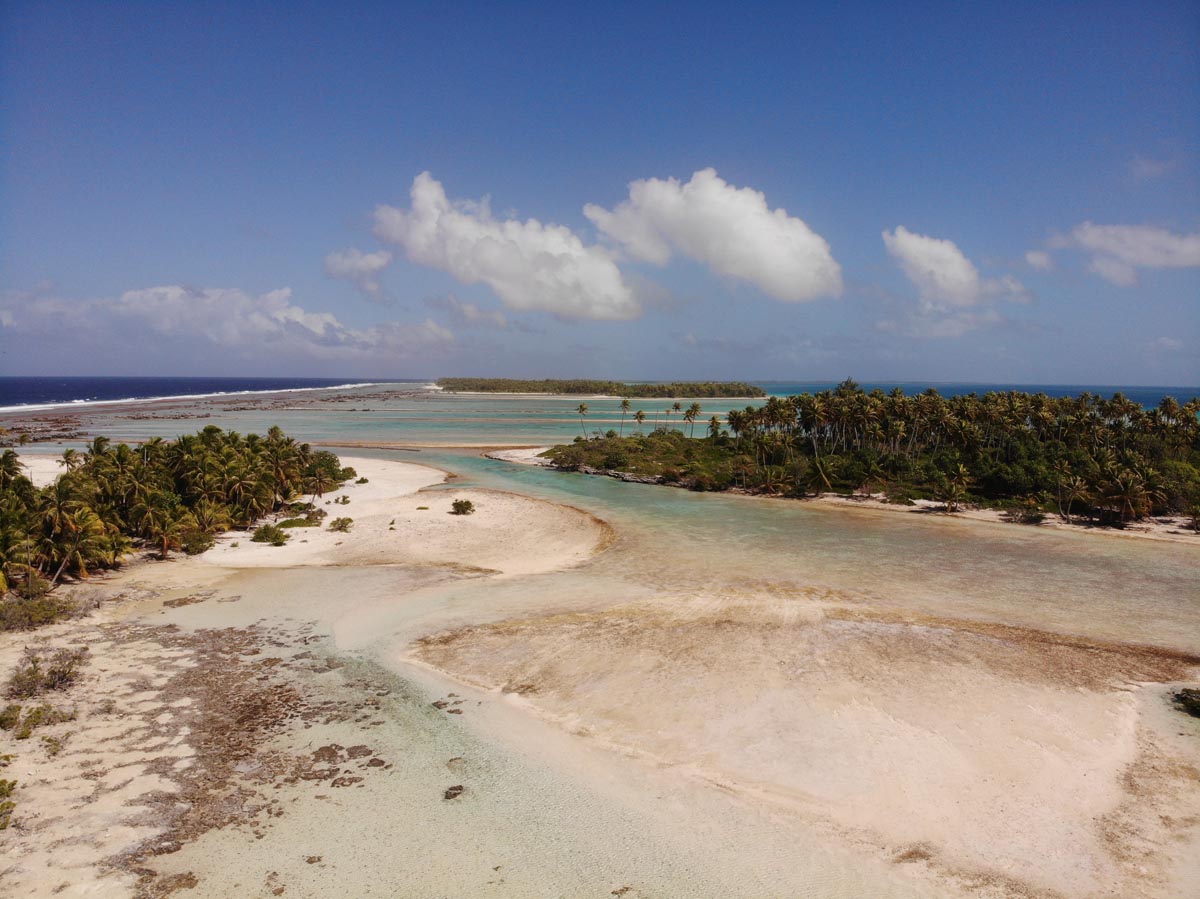
When you finally reach Reef Island, you’ll meet the resident pigs and then head to the reef side to check out the star attraction. As the crew prepares a delicious BBQ lunch, you’ll have plenty of time to explore this magical playground and snorkel in the shallow pools and the narrow lagoon channels separating the islets known as hoa.
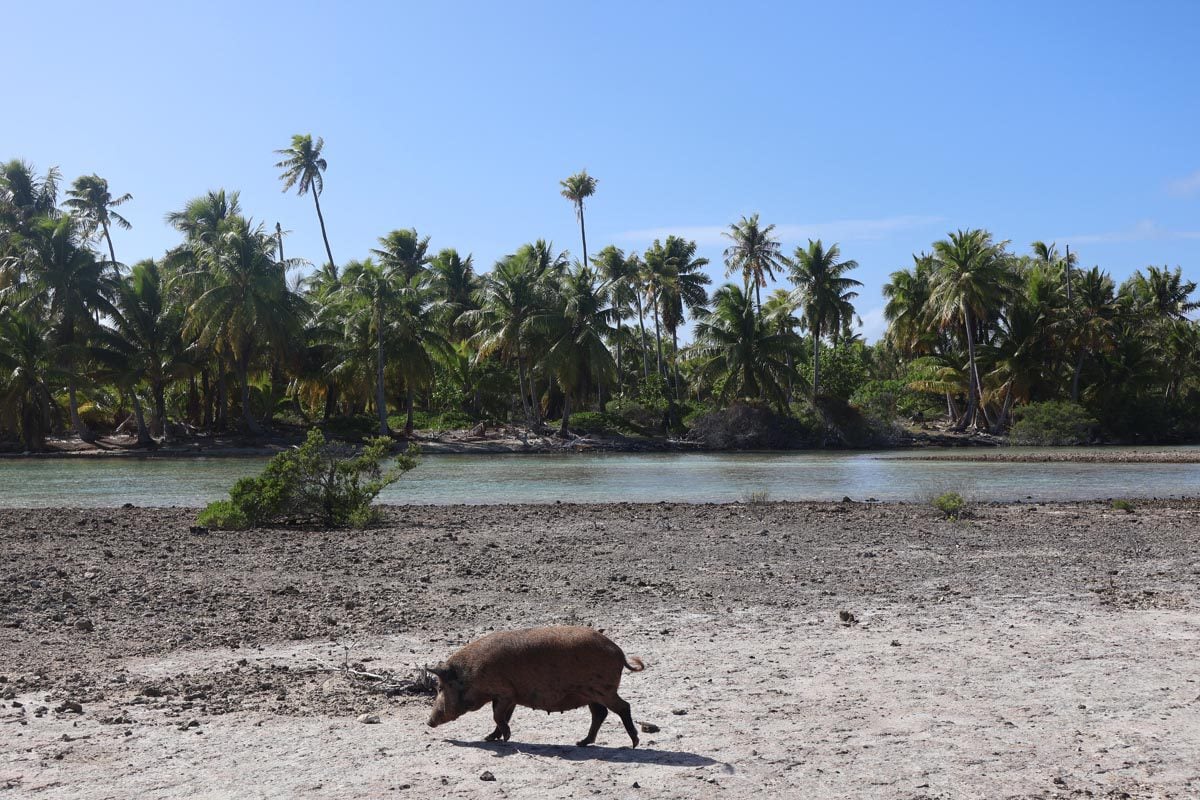
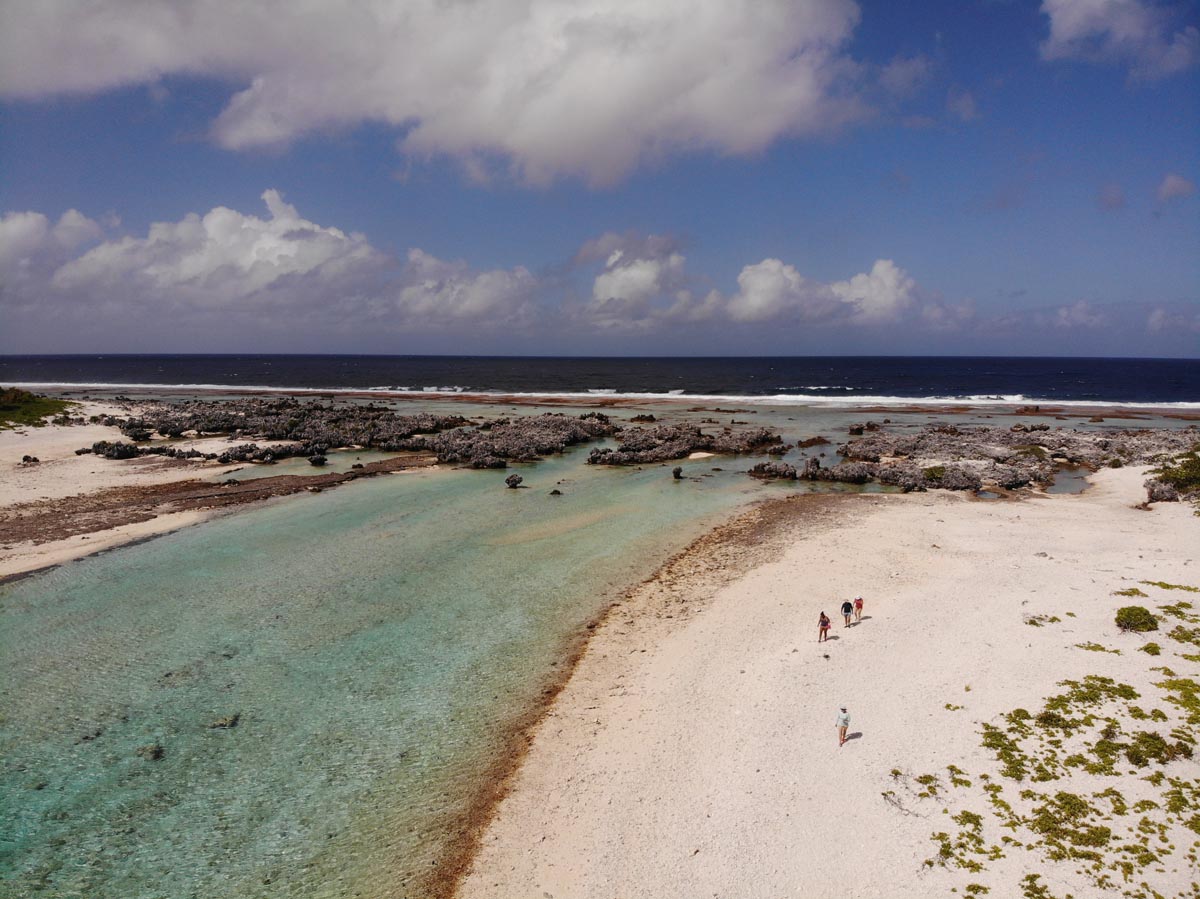
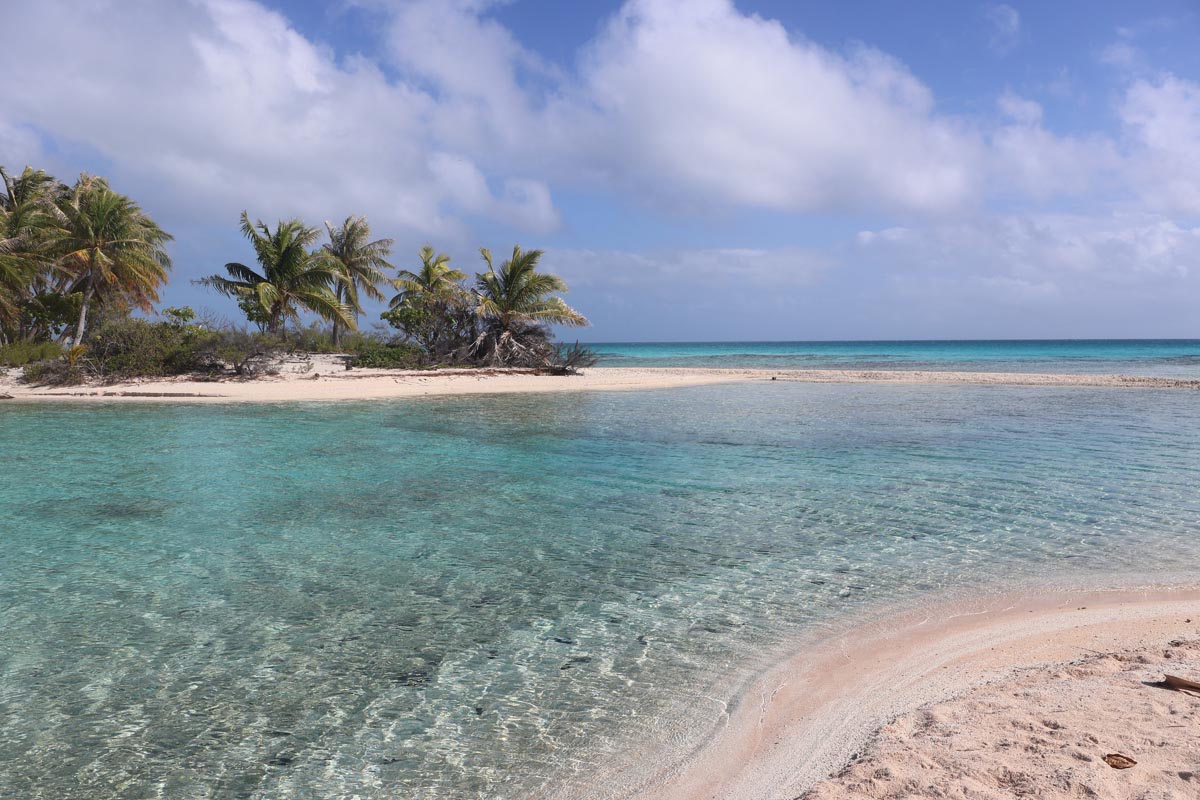
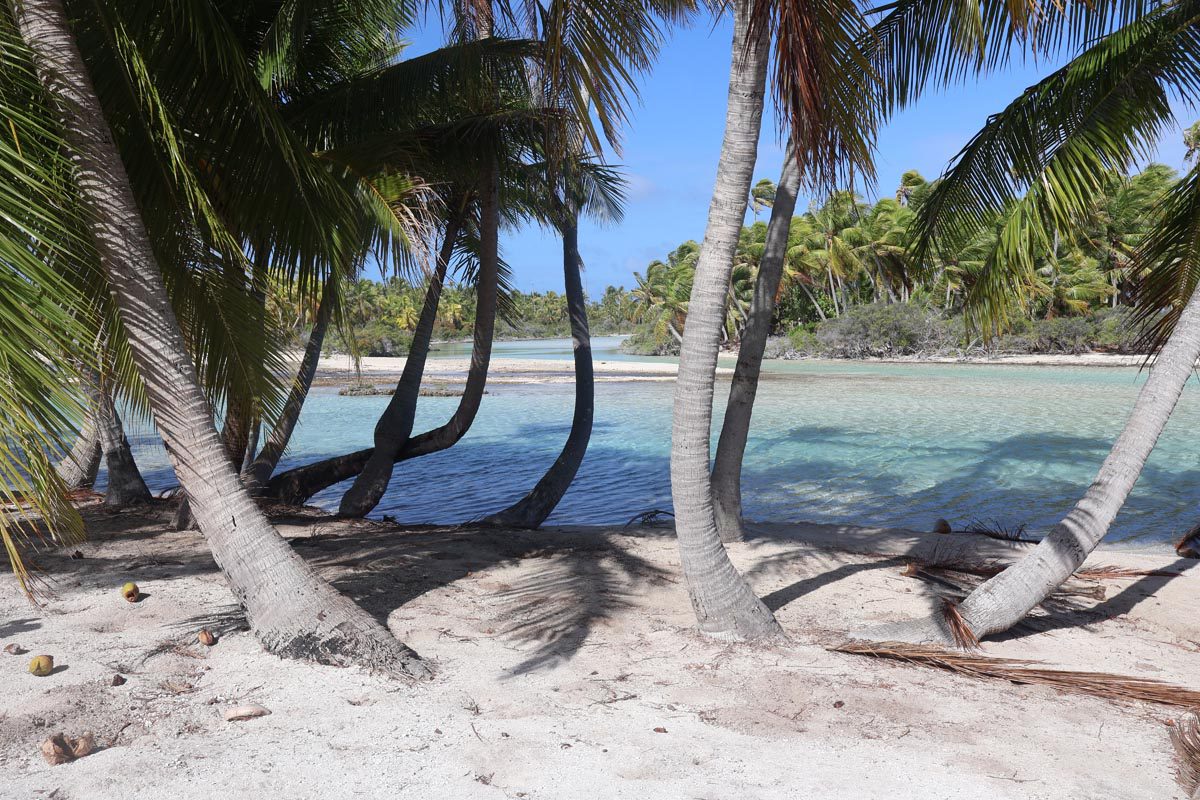
Just like the excursion to the Blue Lagoon, the Reef Island tour begins with an attempt to spot jumping dolphins in Tiputa Pass and concludes with some snorkeling in The Aquarium.
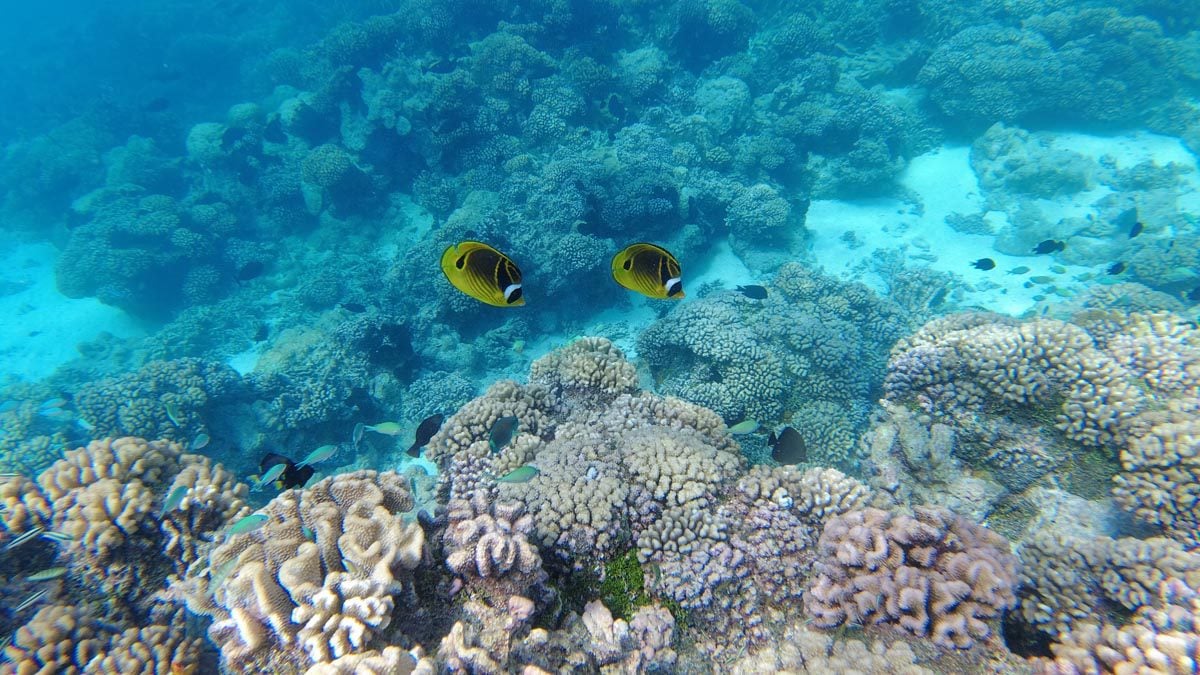
Logistics: same as for the Blue Lagoon.
Additional Options
Book a combo tour to Reef Island and the Blue Lagoon if you’re pressed for time. Naturally, you’ll have less time to spend at each stop, and you’ll spend about three hours in total on the speed boat. Combo tours are less frequent. Some tours to Reef Island also visit Otepipi Village, an abandoned village with a beautiful church made of
Snorkeling In Rangiroa
You can snorkel from just about anywhere on the lagoon side in Rangiroa, but for the best snorkeling, head to The Aquarium. The Aquarium is a marine sanctuary, and locals have placed underwater signs with explanations for snorkelers about some of the fish you might see. The fish are plentiful, and it’s not uncommon to see sharks and eels. You’ll usually visit this snorkeling spot on your way back from excursions to the Blue Lagoon and Reef Island, but you can also head here on a dedicated and much shorter snorkeling excursion.
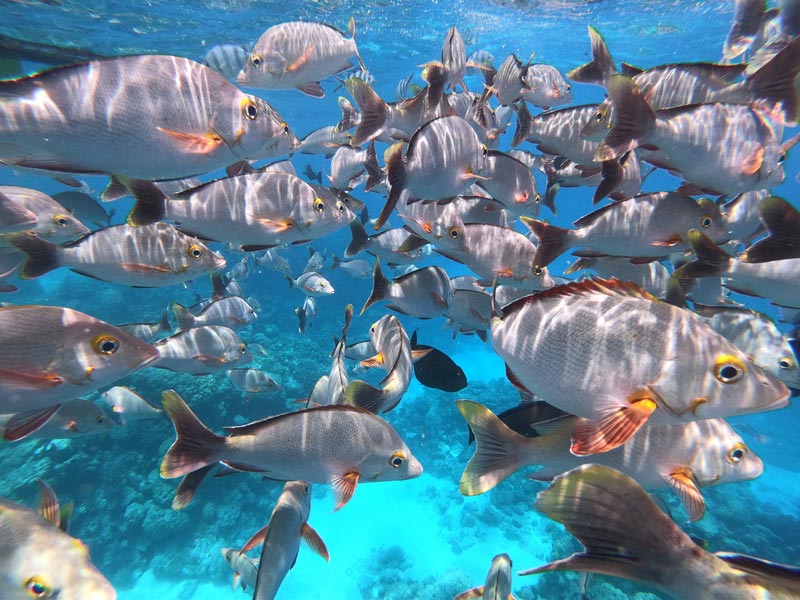
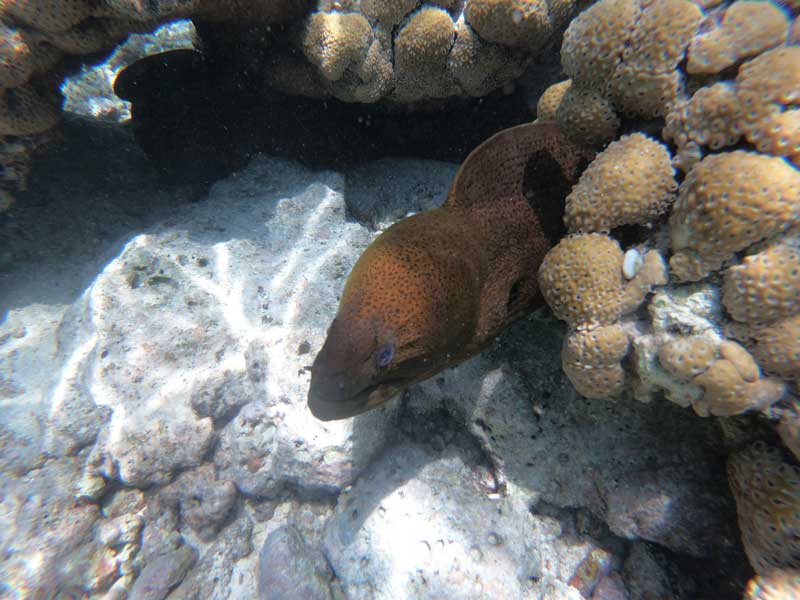
“Unofficial” Snorkeling With Sharks
Here’s a secret tip for those who wish to guarantee a shark sighting while snorkeling. Just beyond Pension Teina & Marie, there is a small boat ramp that descends into the lagoon, and beyond is a small shack used by fishermen for cleaning and packing fish headed for Tahiti’s markets. Ask the guys at the shack if it’s safe to enter the water (the tide is a factor), and if it is, go for a swim in the shallow area just in front of the shack. Here’s what you’ll likely see…
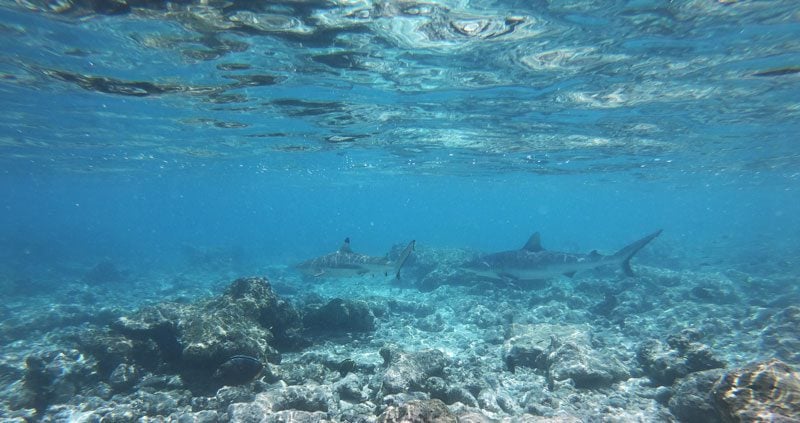
Shark Spotting
If you’re not a fan of snorkeling but still want to see sharks, head to the main quay and follow the narrow concrete path that ends abruptly after a few meters. If you stick around for a few minutes, you’ll likely see reef sharks patrolling the reef.
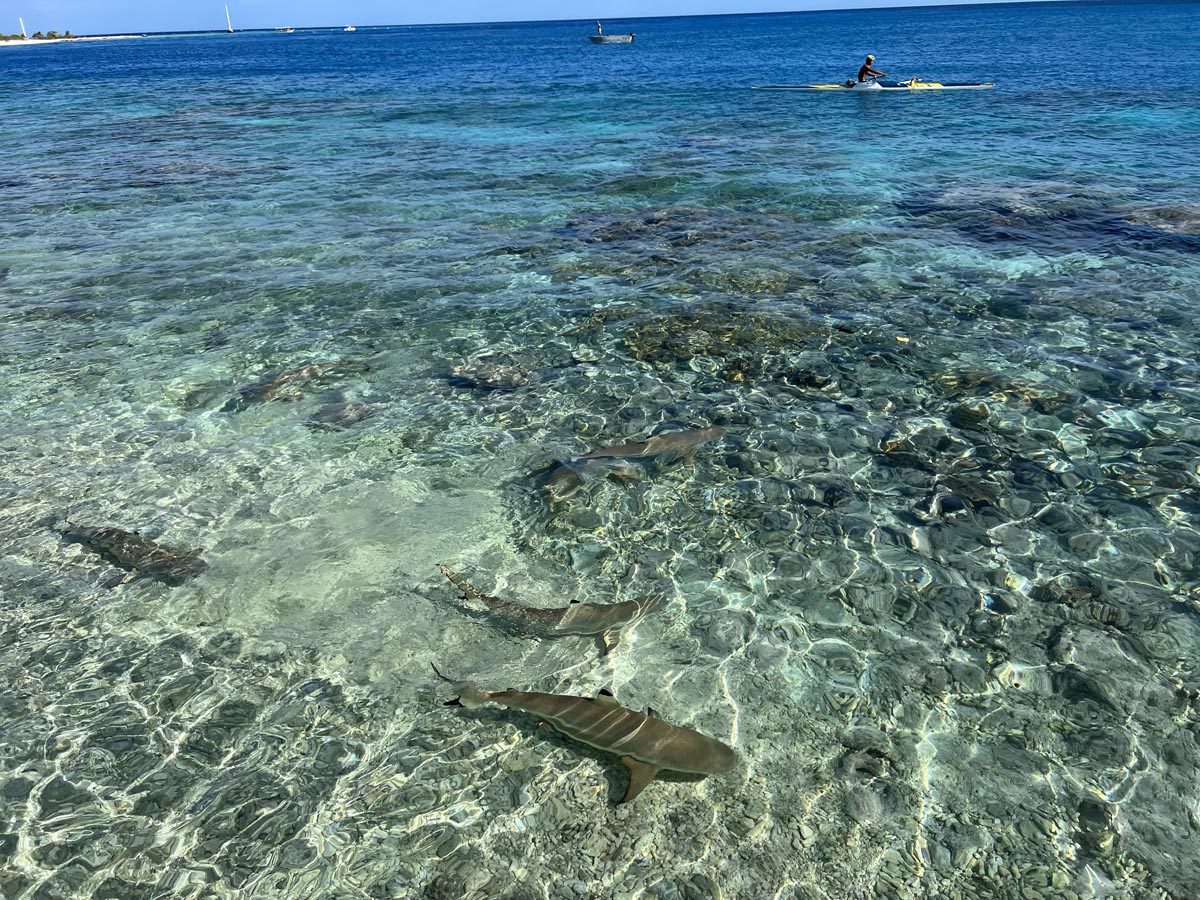
Dolphin Watching
Head to the dolphin viewpoint (see companion map) to catch the sunset and watch dolphins. Sightings are not guaranteed, but if you time your visit with the outgoing current, there’s a good chance of seeing dolphins having a good time.
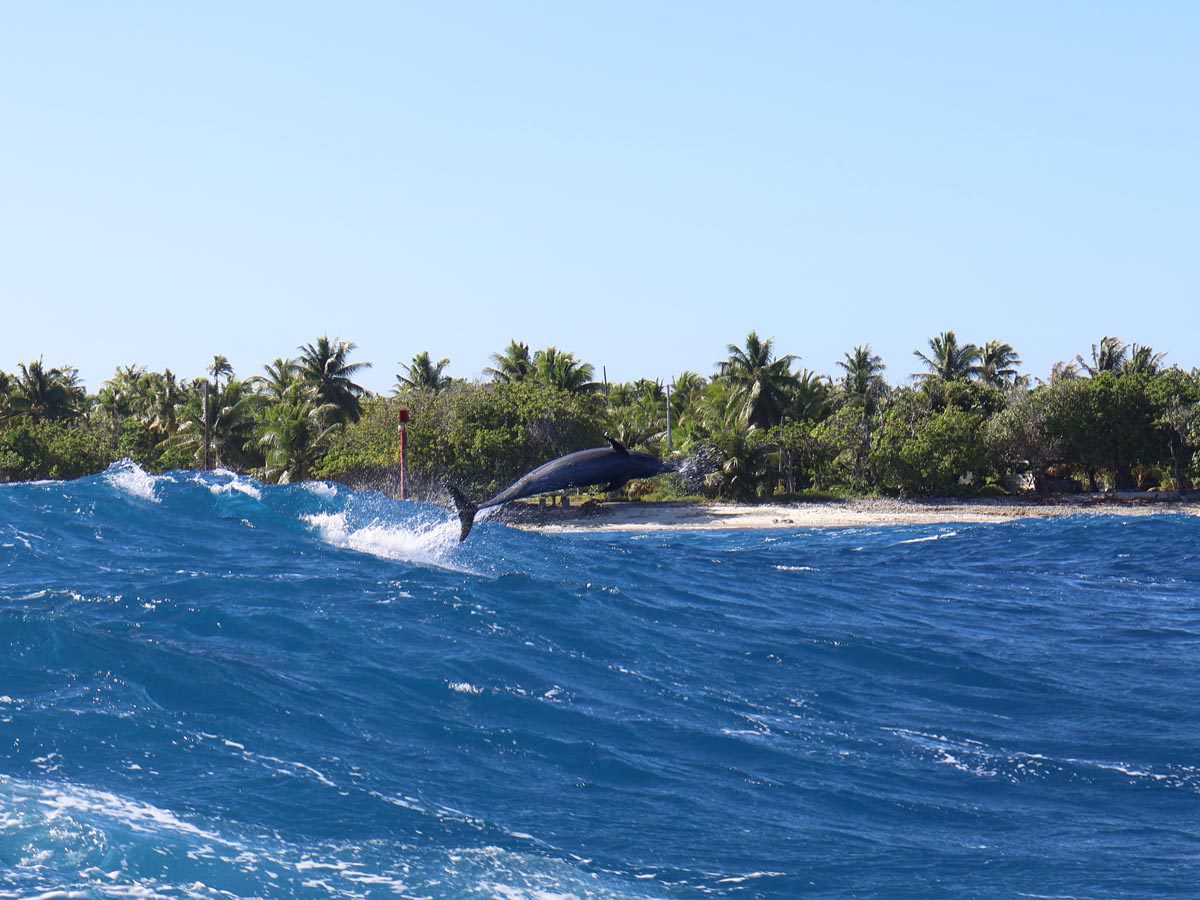
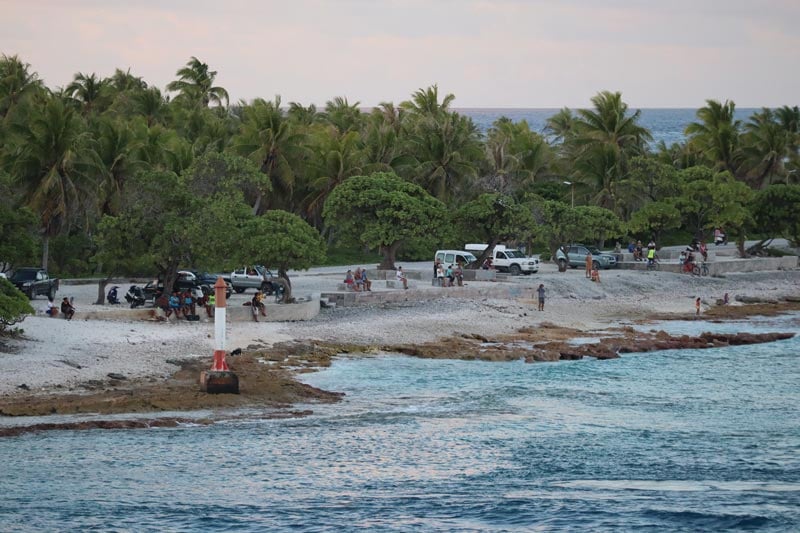
Bird Watching
French Polynesia’s atolls are a haven for birds and heaven for bird watchers. I found the main quay close to Tiputa Pass an excellent bird-watching place. Perhaps it’s because of the food waste from the nearby restaurants or fishermen coming and going. For proper bird watching in Rangiroa, hire a guide or join a shared tour to Motu Paio. Like the Bird Island in Tikehau, Motu Paio is a tiny islet deep in the lagoon where thousands of birds nest. Usually, these birds have not yet developed a fear of humans so please respect them.
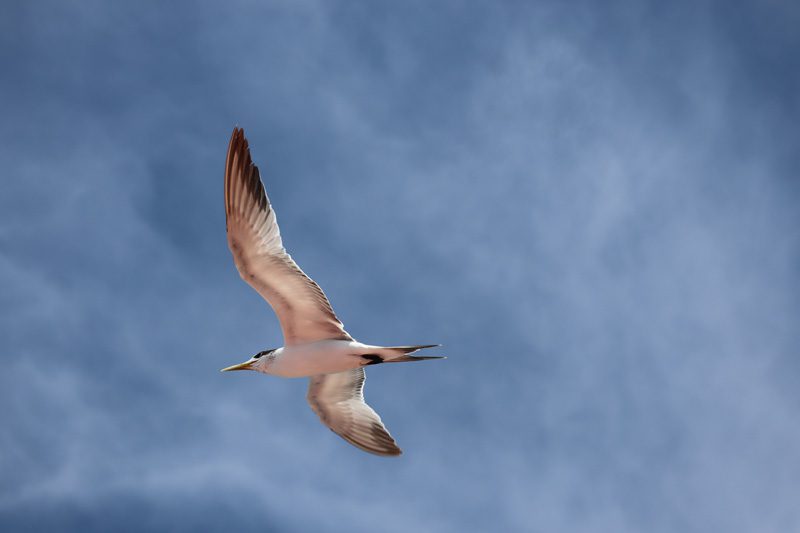
Public Beach
One of the few (if not the only) sandy beaches on the main motu. There’s also a soccer field behind the beach, and many locals come here for a dip in the late afternoons and weekends.
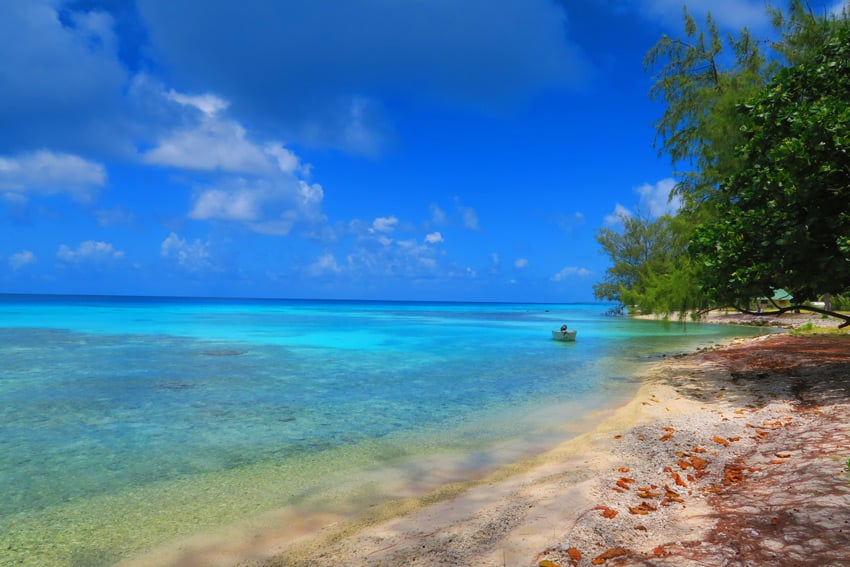
Avatoru Village
There’s not much happening in the biggest village in the entire Tuamotu Archipelago. The two small churches and the pier are interesting, a good spot to appreciate the Avatoru Pass and watch local fishermen working on tonight’s dinner.
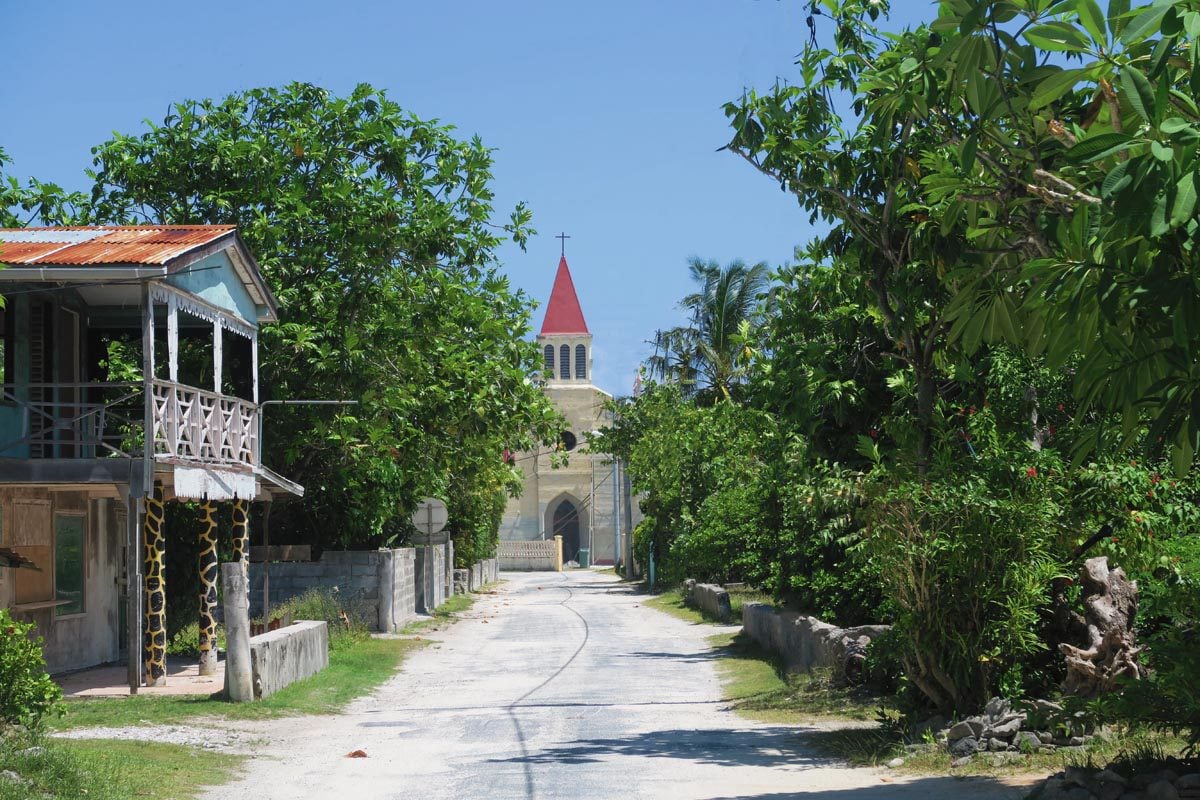
Pearl Farm
If you haven’t visited a pearl farm yet, head to Gauguin’s Pearl, between Avatoru and Tiputa, to learn about the interesting process of producing the exquisite Tahitian black pearl. The pearl farm offers free guided tours on weekdays (and perhaps free pickup).
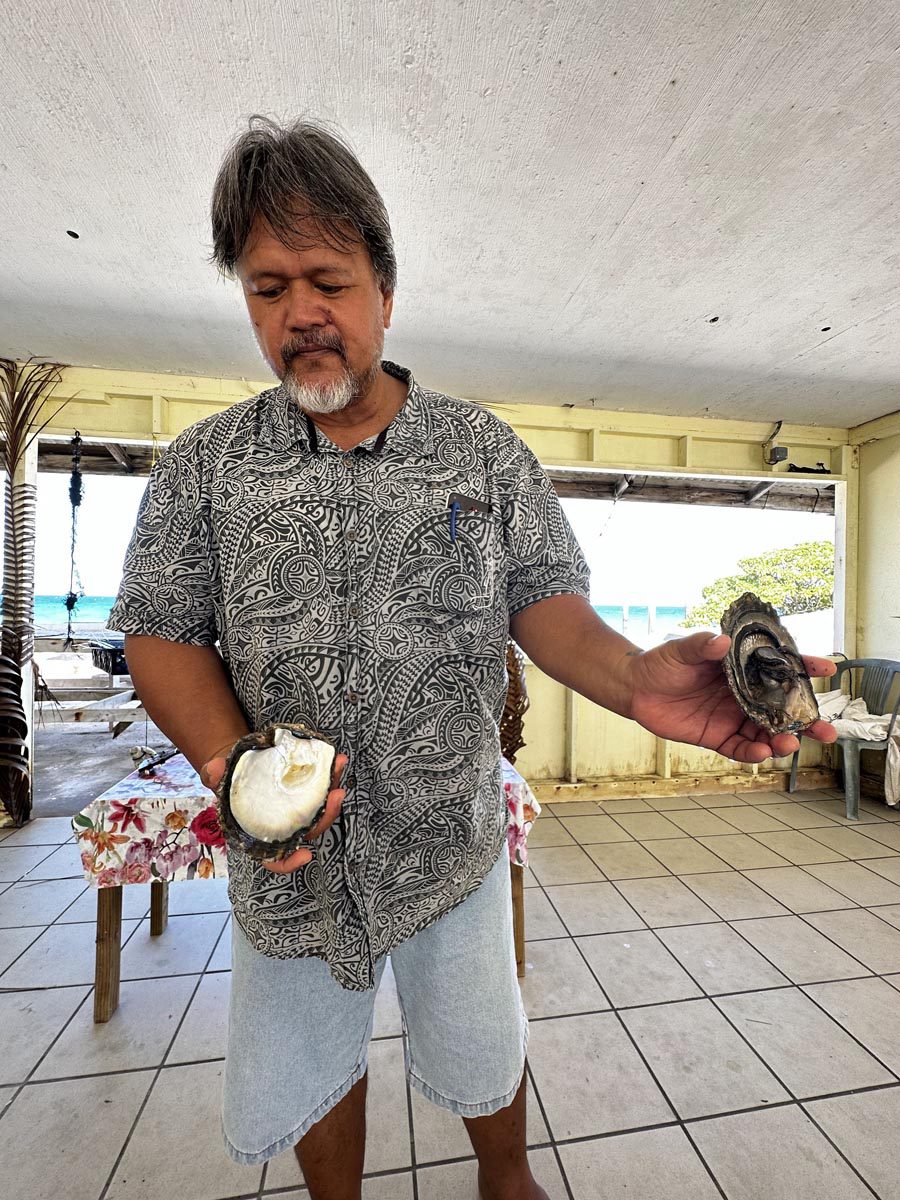
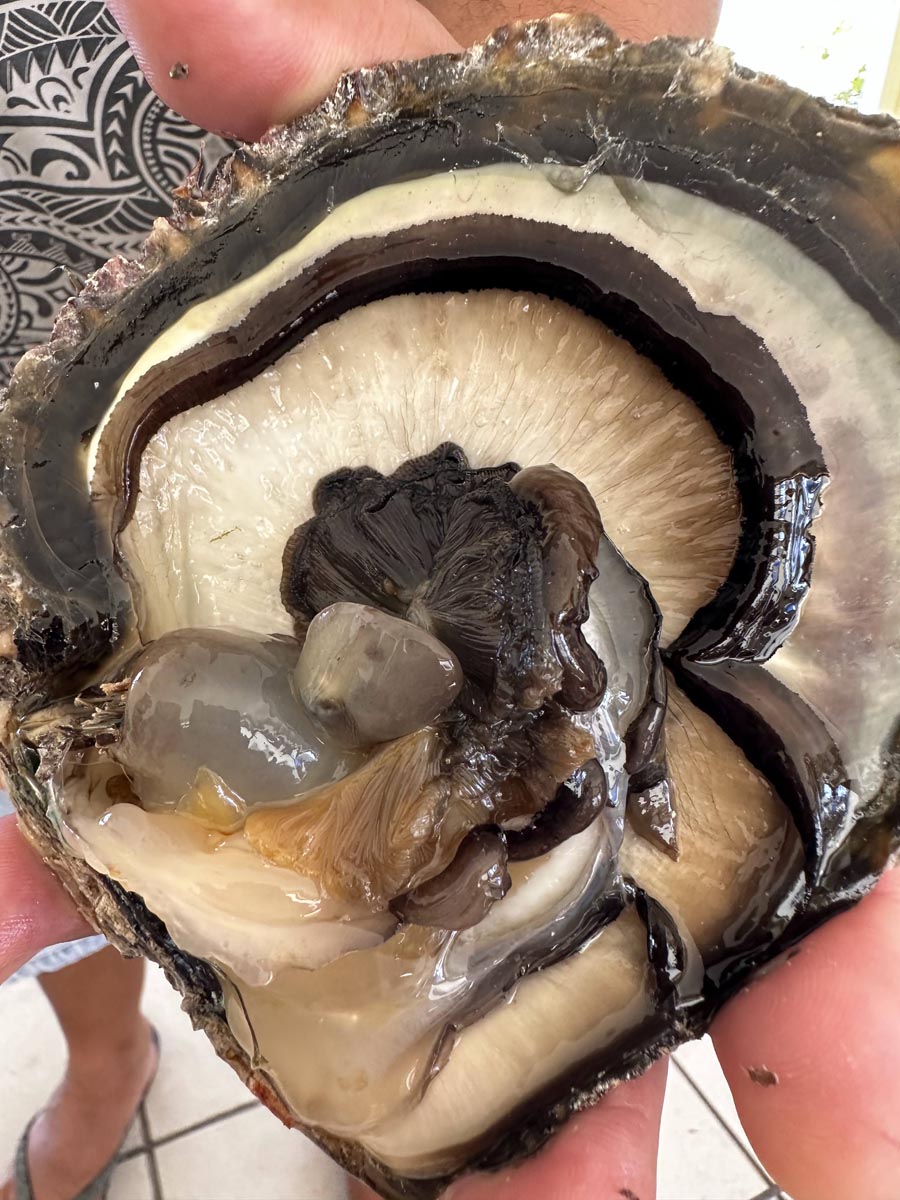
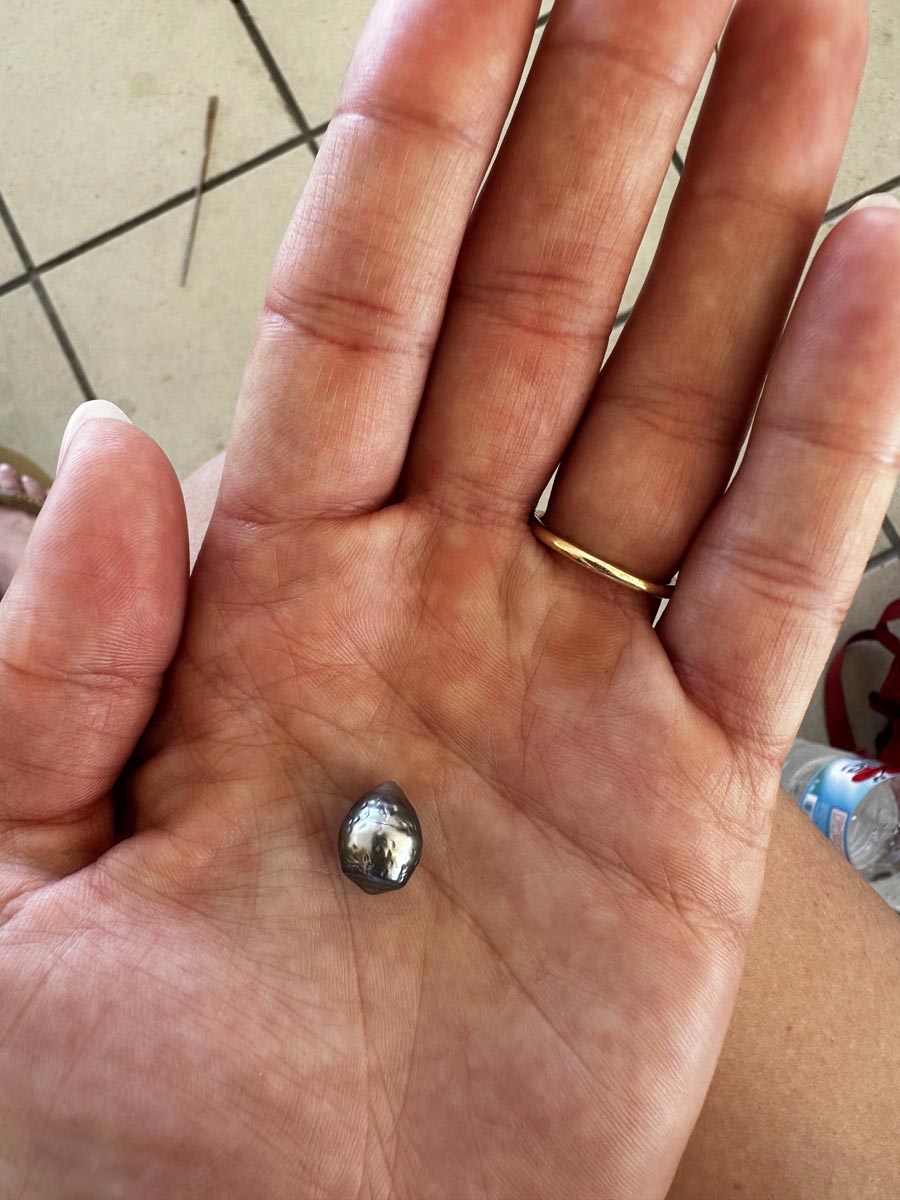
Winery Tour
Rangiroa is currently the only wine-producing island in French Polynesia! The vineyard of Vin de Tahiti was established not too long ago on a remote motu in Rangiroa, but the wine itself is produced right here along the main road. Inquire with locals about opening hours (tours usually begin around 5 pm and cost 2,000 XPF per person). The winery also produces a highly acclaimed rum under the Mana’o label, and you’ll be tasting both wines and rum until you say “no more”.
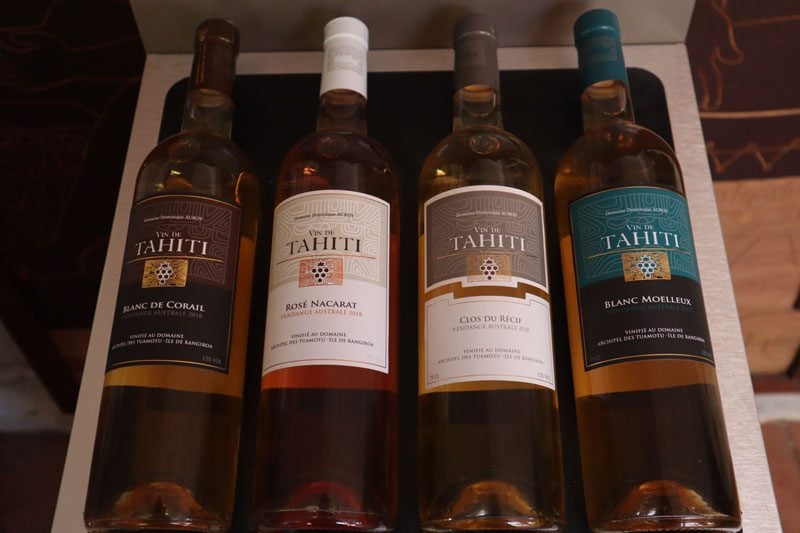
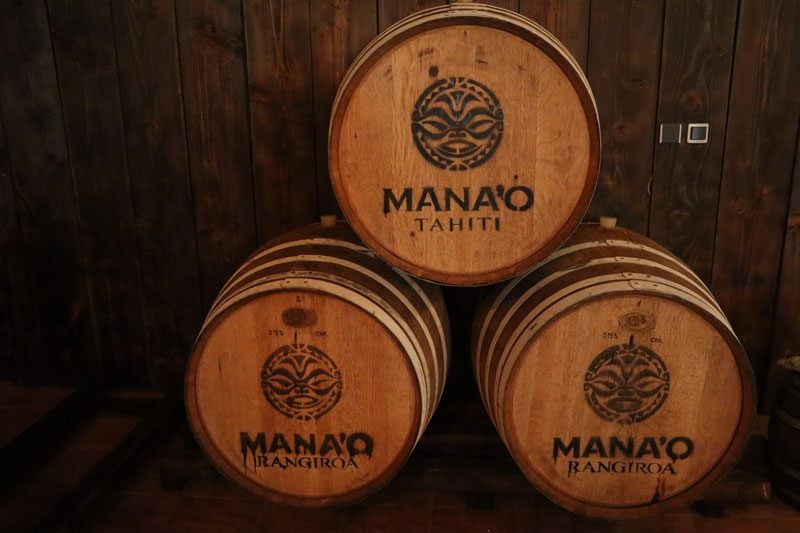
Tiputa Village
There’s not much happening in the village on the other side of the Tiputa Pass, and that’s why you must pay a visit. Before Rangiroa’s airport opened in the early 1960s, the “action” in Rangiroa was pretty much equally shared by the two villages, Tiputa and Avatoru. As more businesses, tourists, and freight moved to the Avtoru side, Tiputa lost its status.
Nowadays, it’s an interesting place to visit if you want to see what Rangiroa looked like decades ago. Hop on a water taxi from the main port, go for a stroll, and check out the old lighthouse. Once you get out of the village, there isn’t much. Even the paved road comes to an end. You can easily find your private spot along the lagoon or reef, have a snack, and kill a few hours.
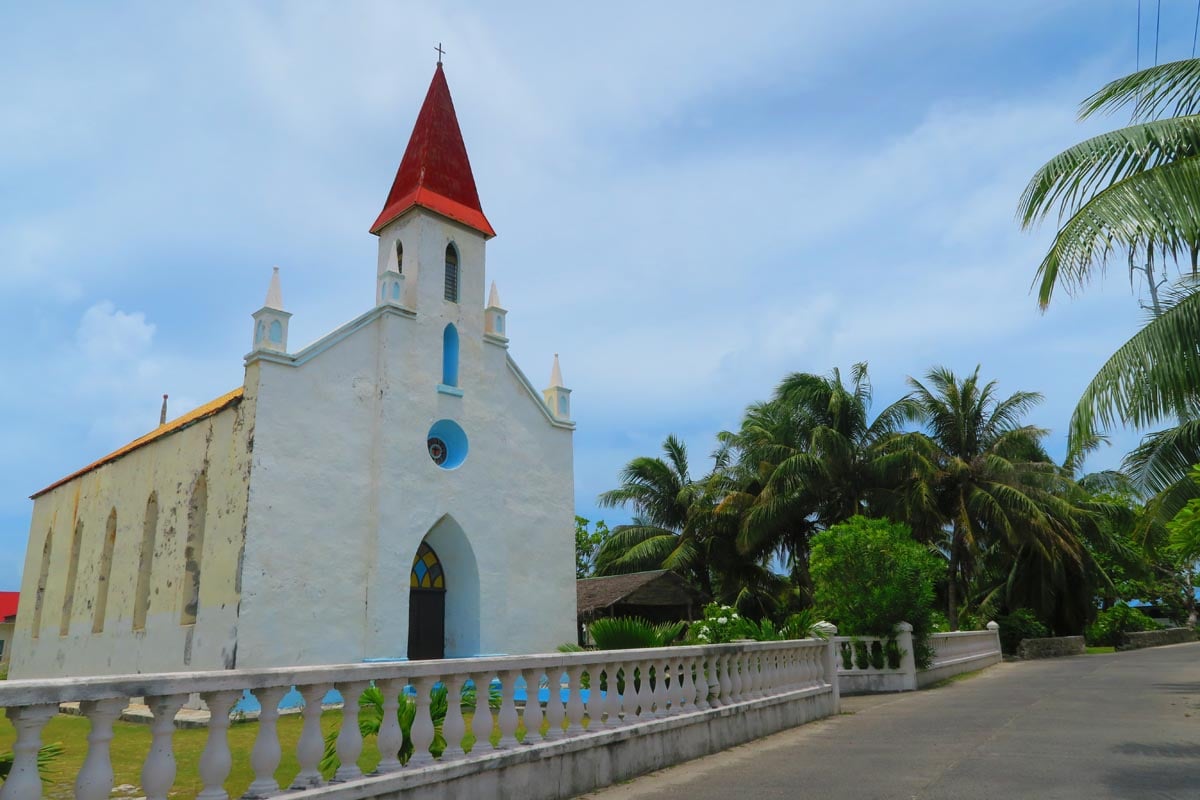
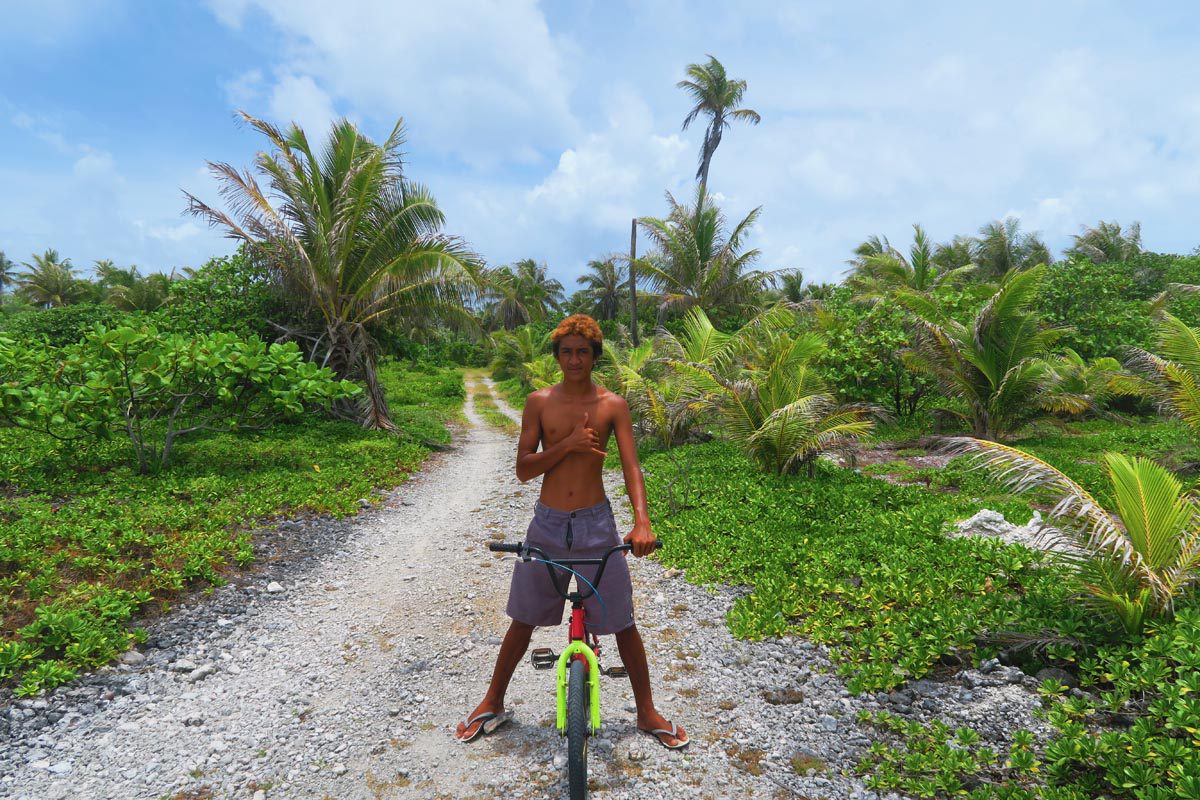
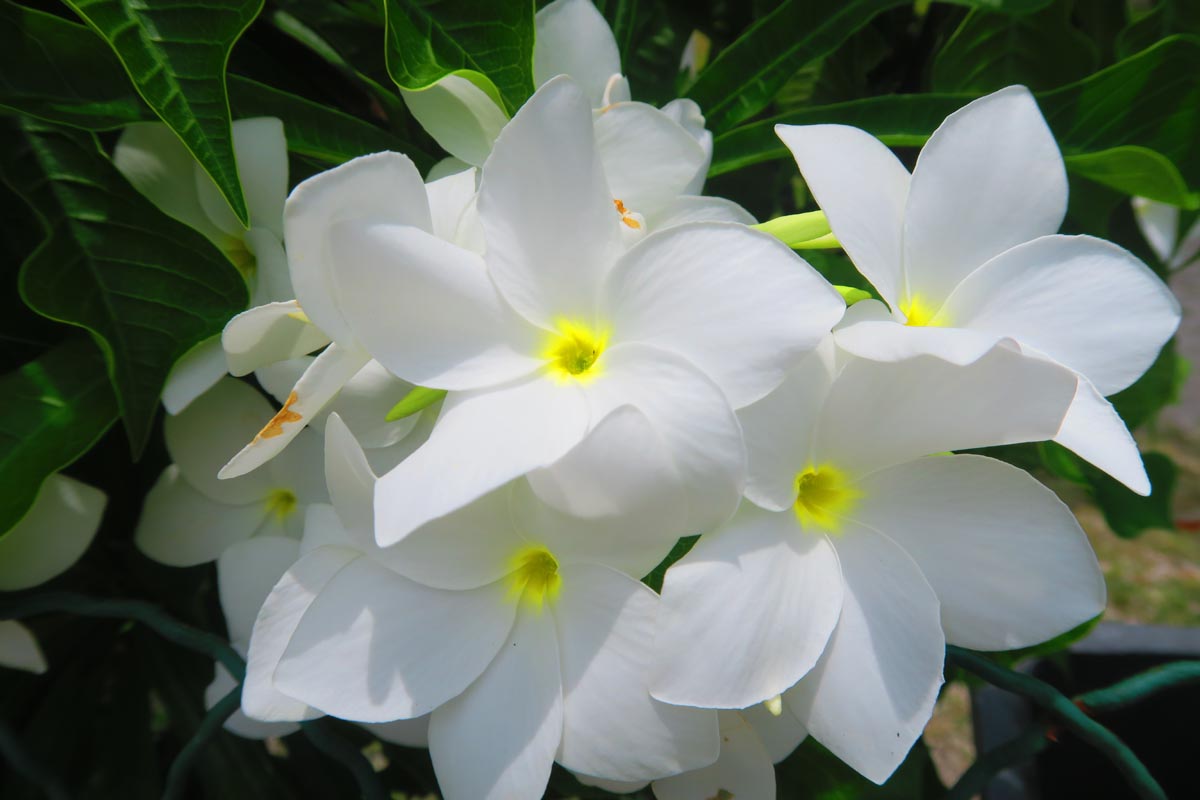
The Pink Sand Beach
Rangiroa is less known for its pink sand beaches than Tikehau and Fakarava, perhaps because of the exceptional Reef Island and the Blue Lagoon. If you aren’t visiting these atolls or have an extra day to fill in Rangiroa, see if any supplier is heading to the Pink Sand Beach (les Sables Roses). The prized beach is about 90 minutes by speedboat southeast of the main motu. The tour might include a visit to the abandoned Otepipi Village.
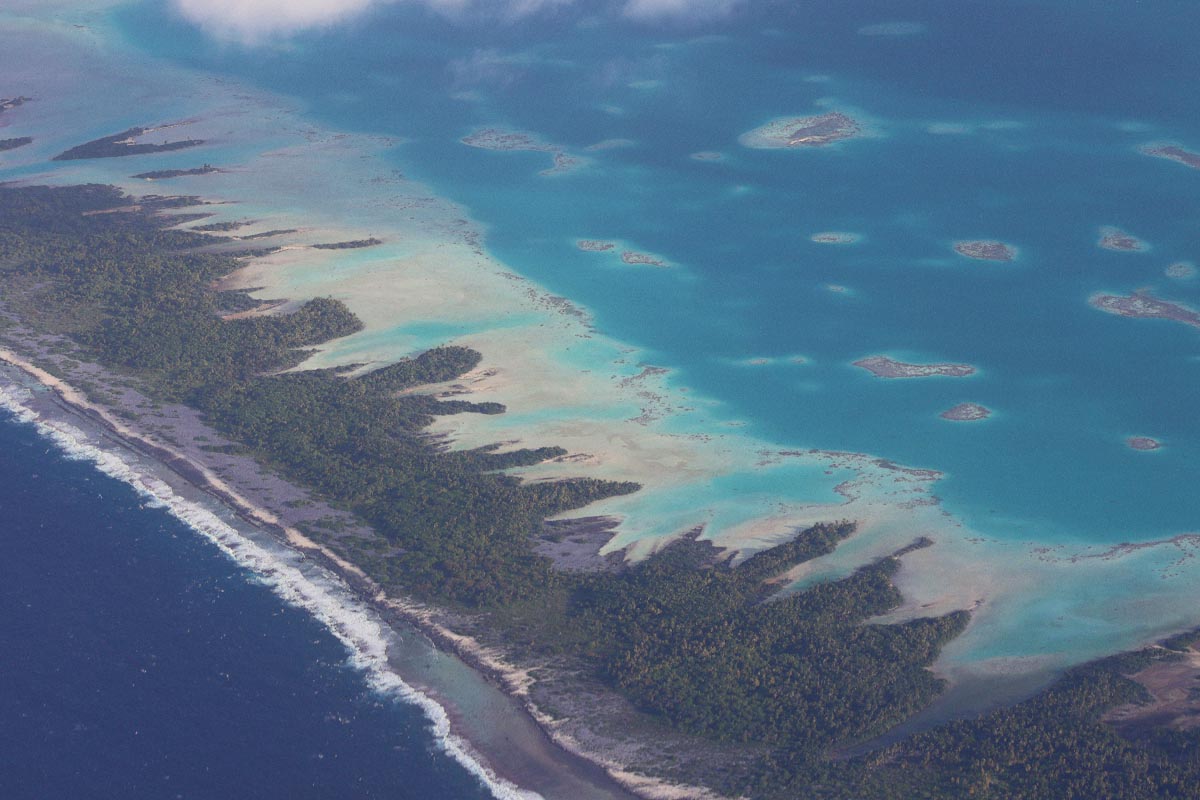
What’s Next?
I hope you’ve found this Rangiroa Travel Guide useful. For more information about Rangiroa, the Tuamotu Atolls, and French Polynesia, check out these recommended guides.
Tahiti, Tailor Made!
The Islands of Tahiti are among the last places to be colonized by mankind, 118 islands, each with its unique personality.
Get expert advice and assistance with planning your trip to the destination where tropical dreams come true!
